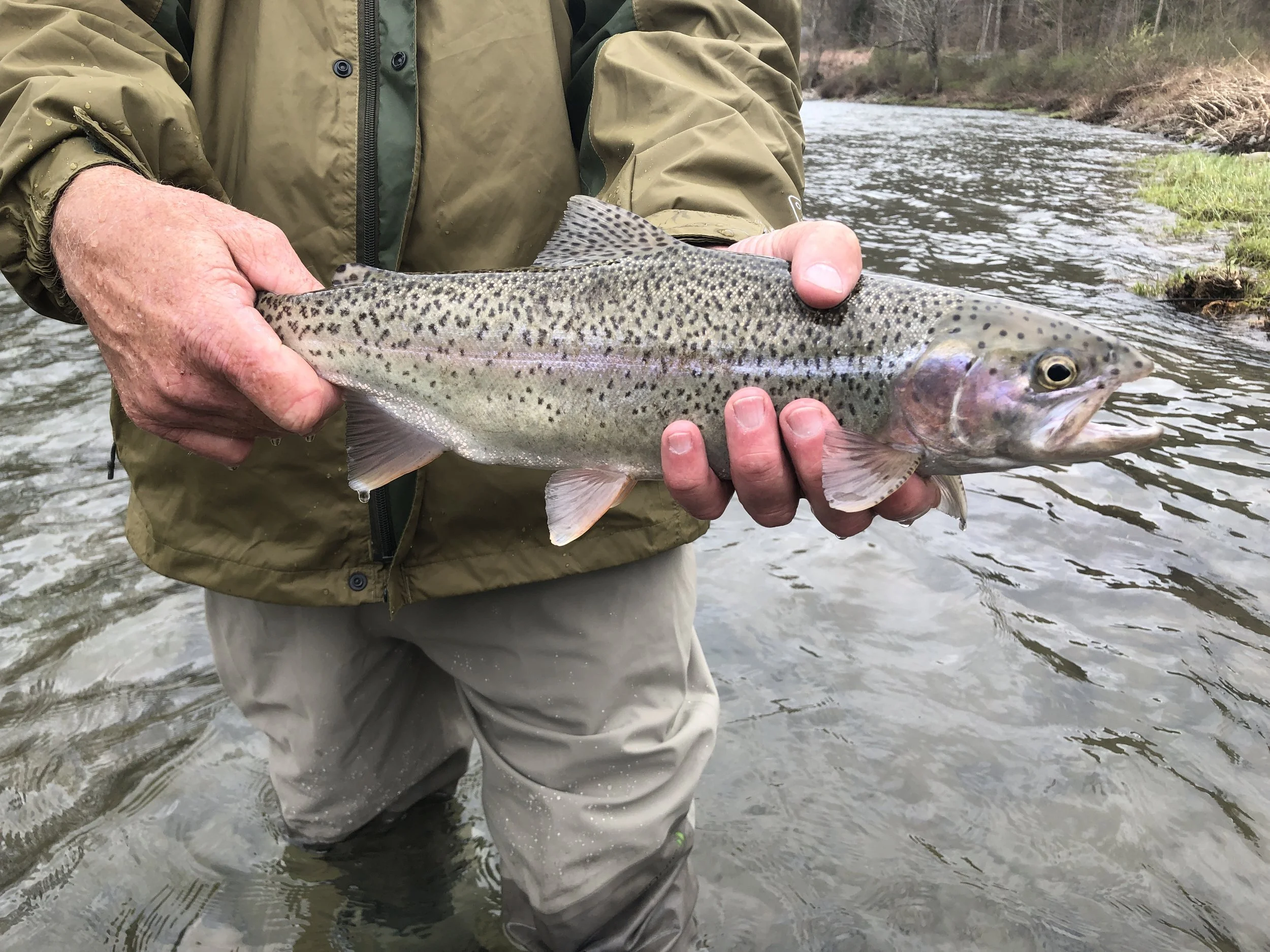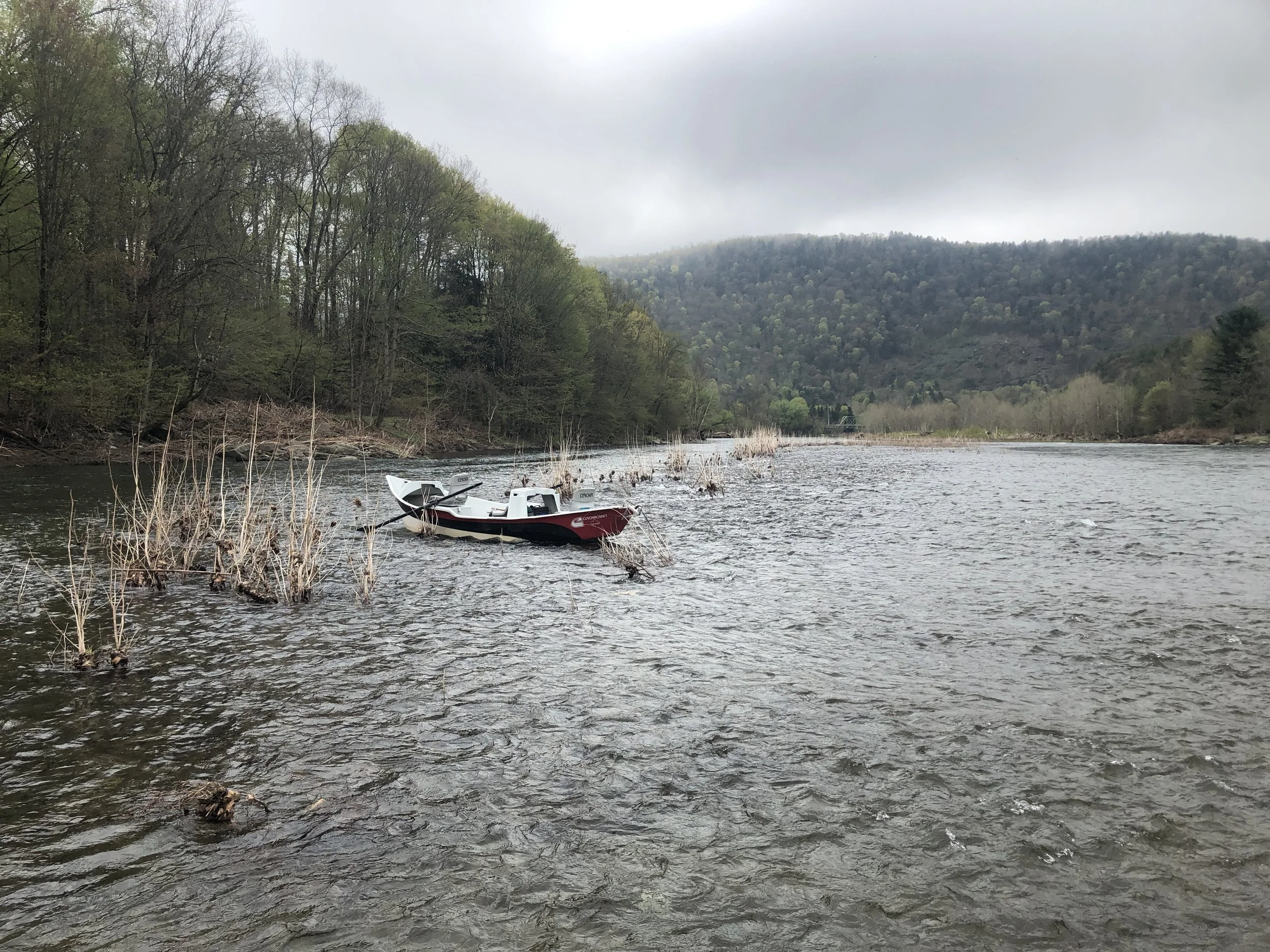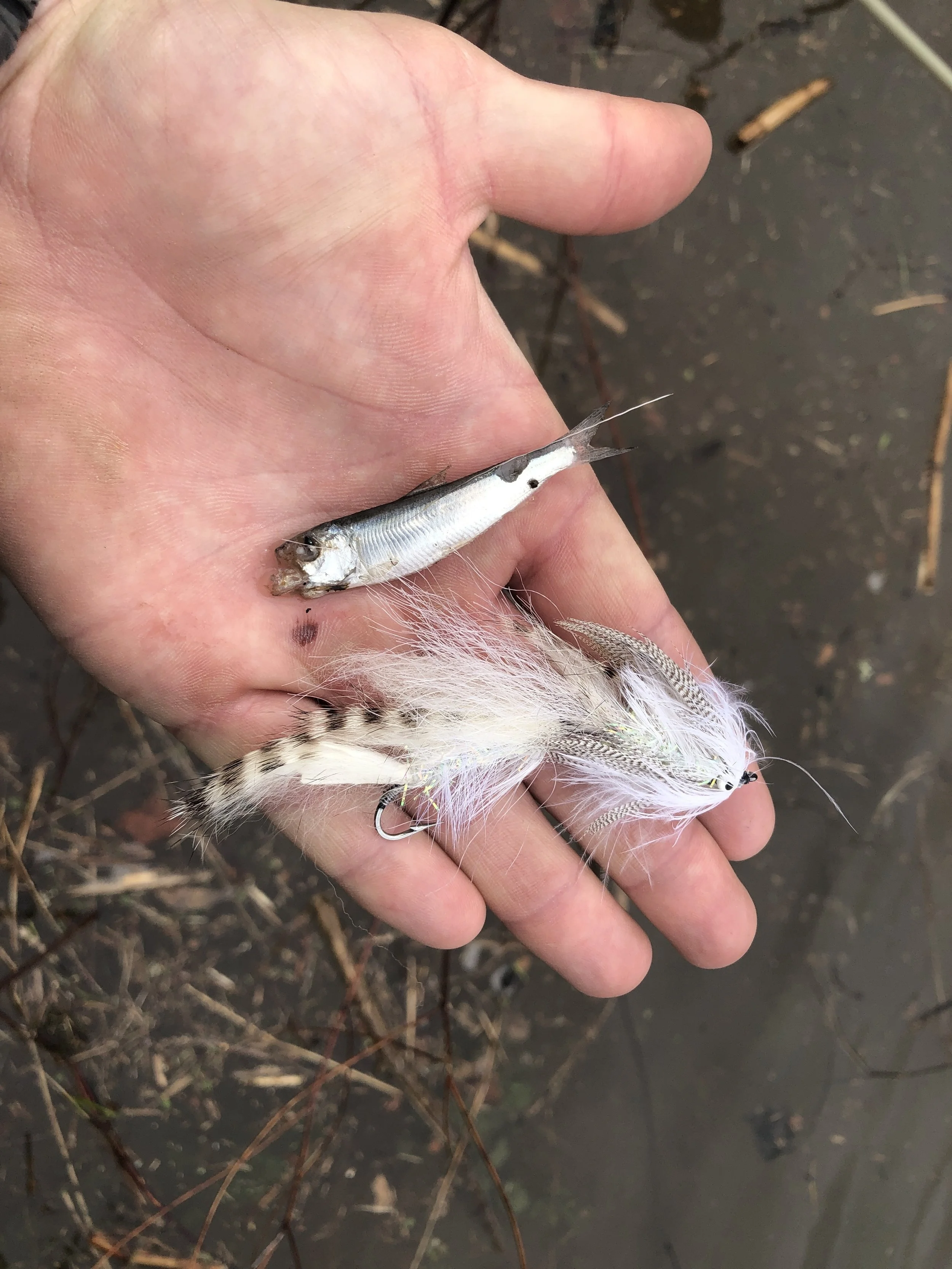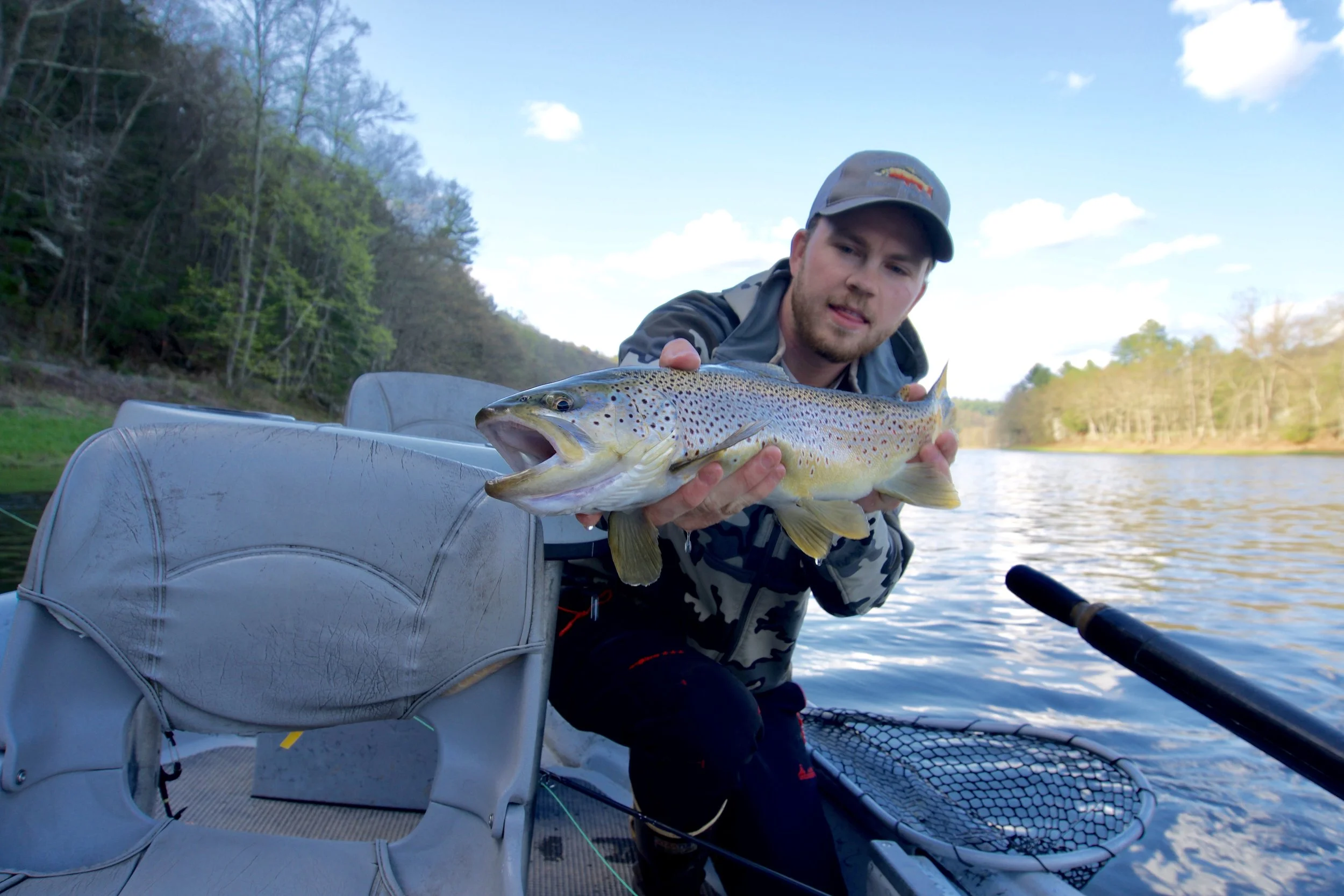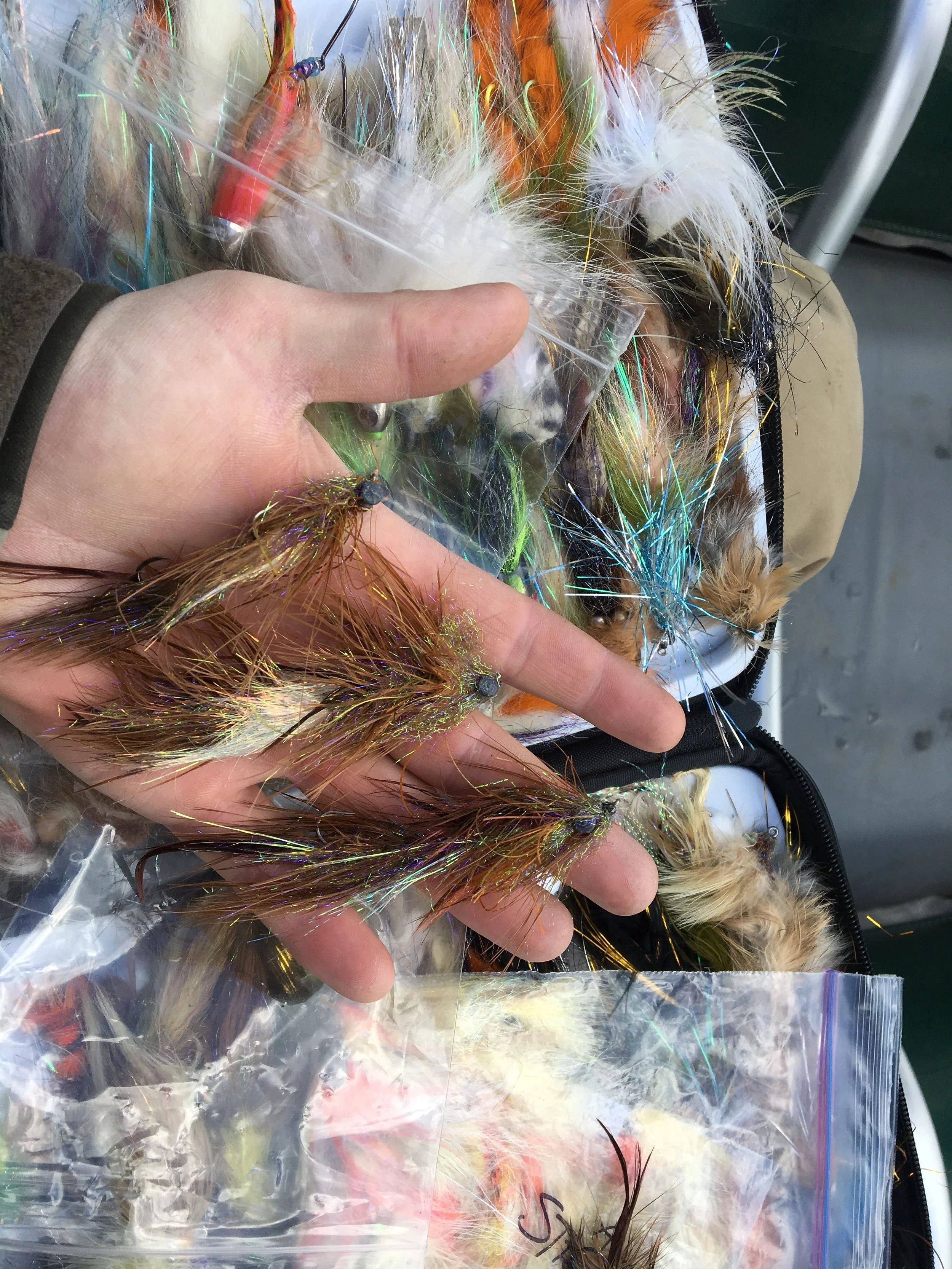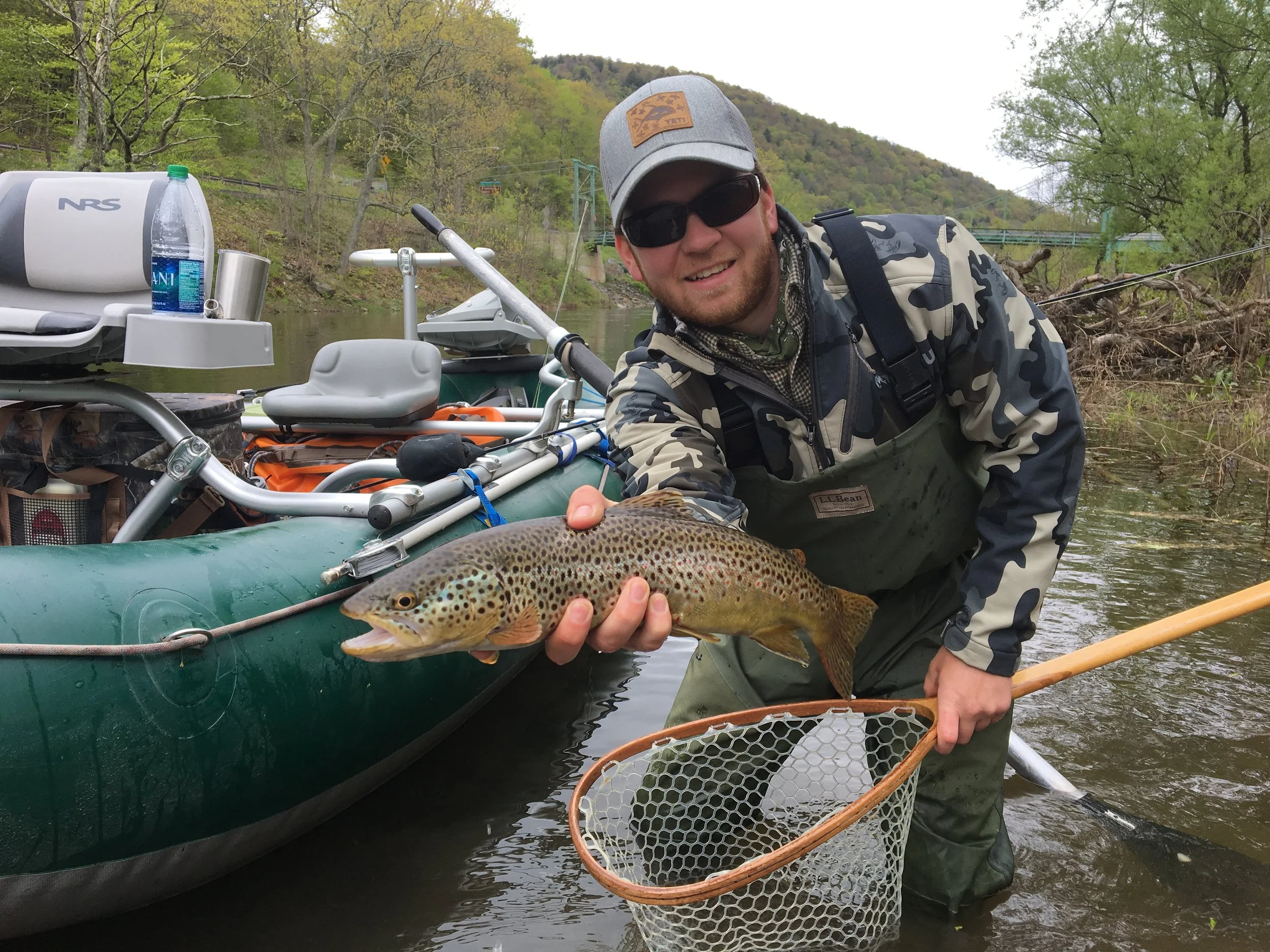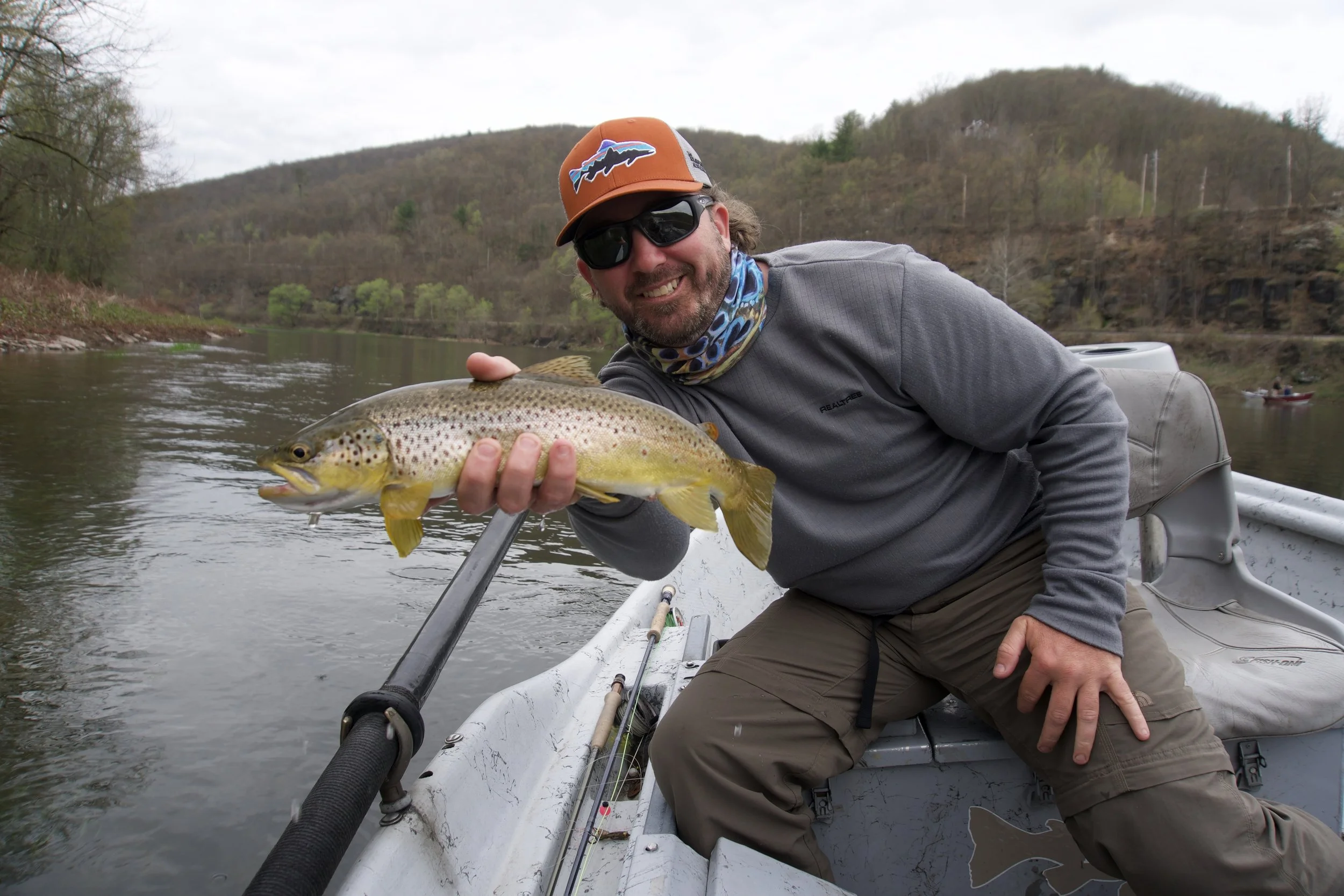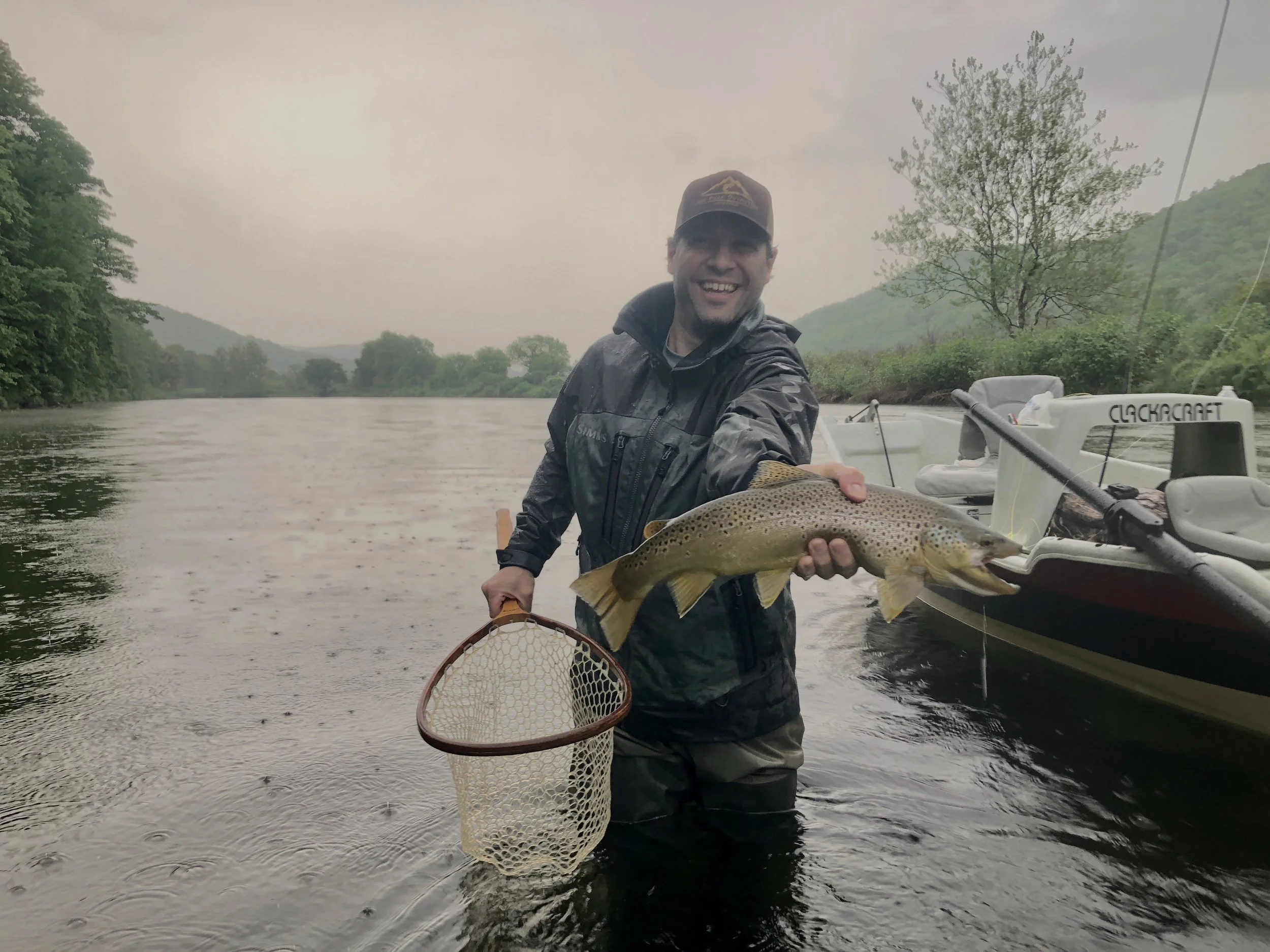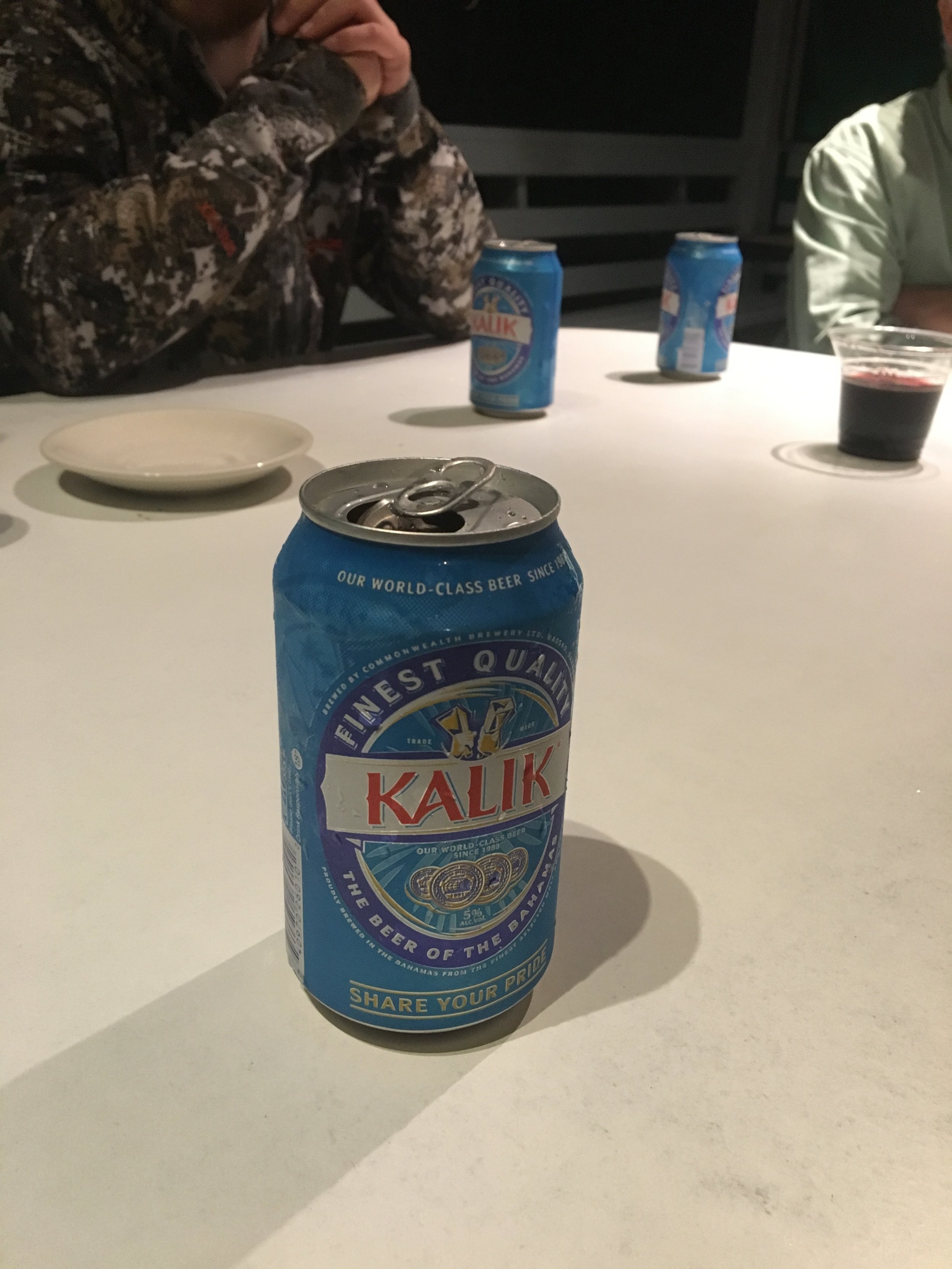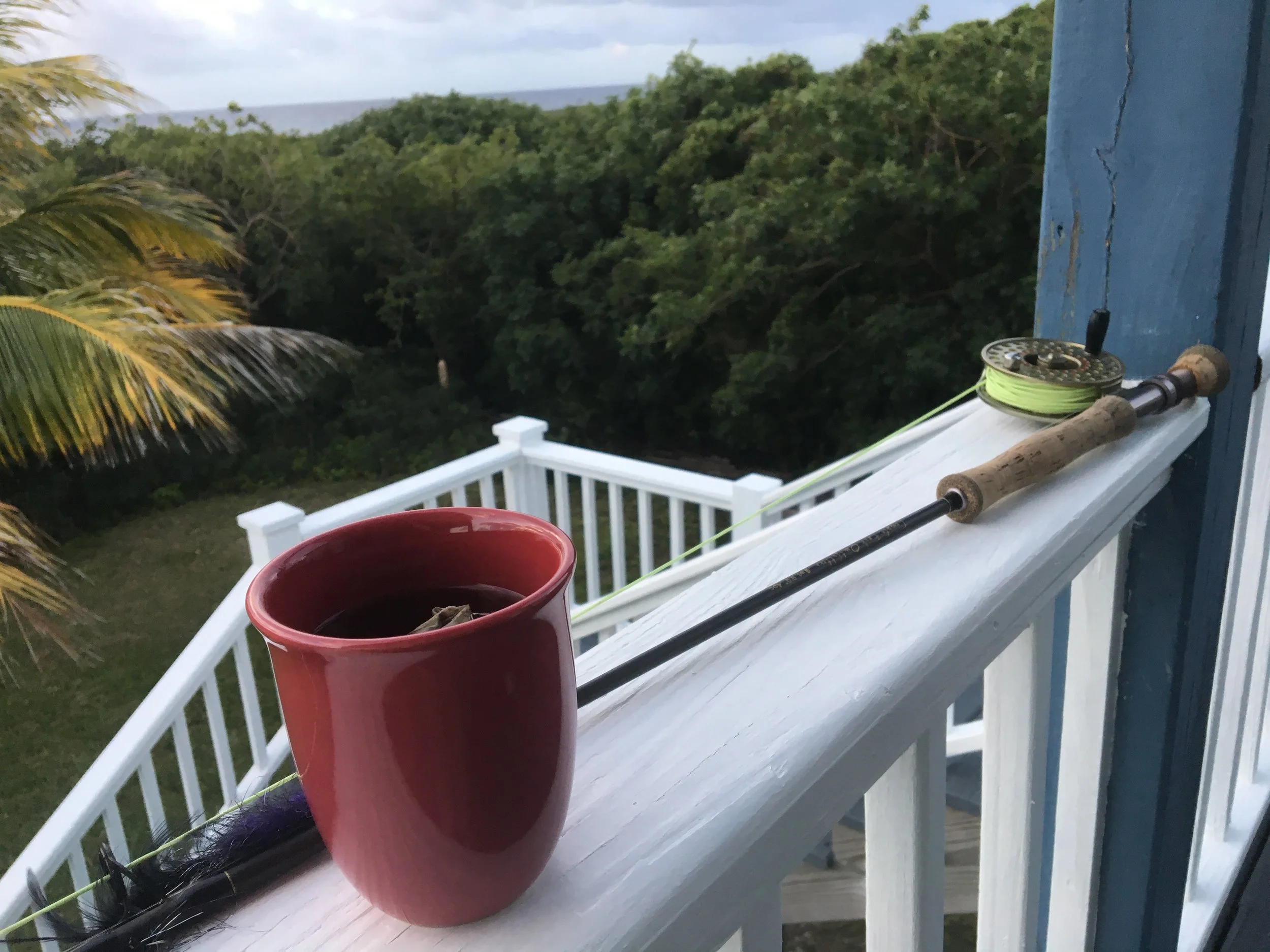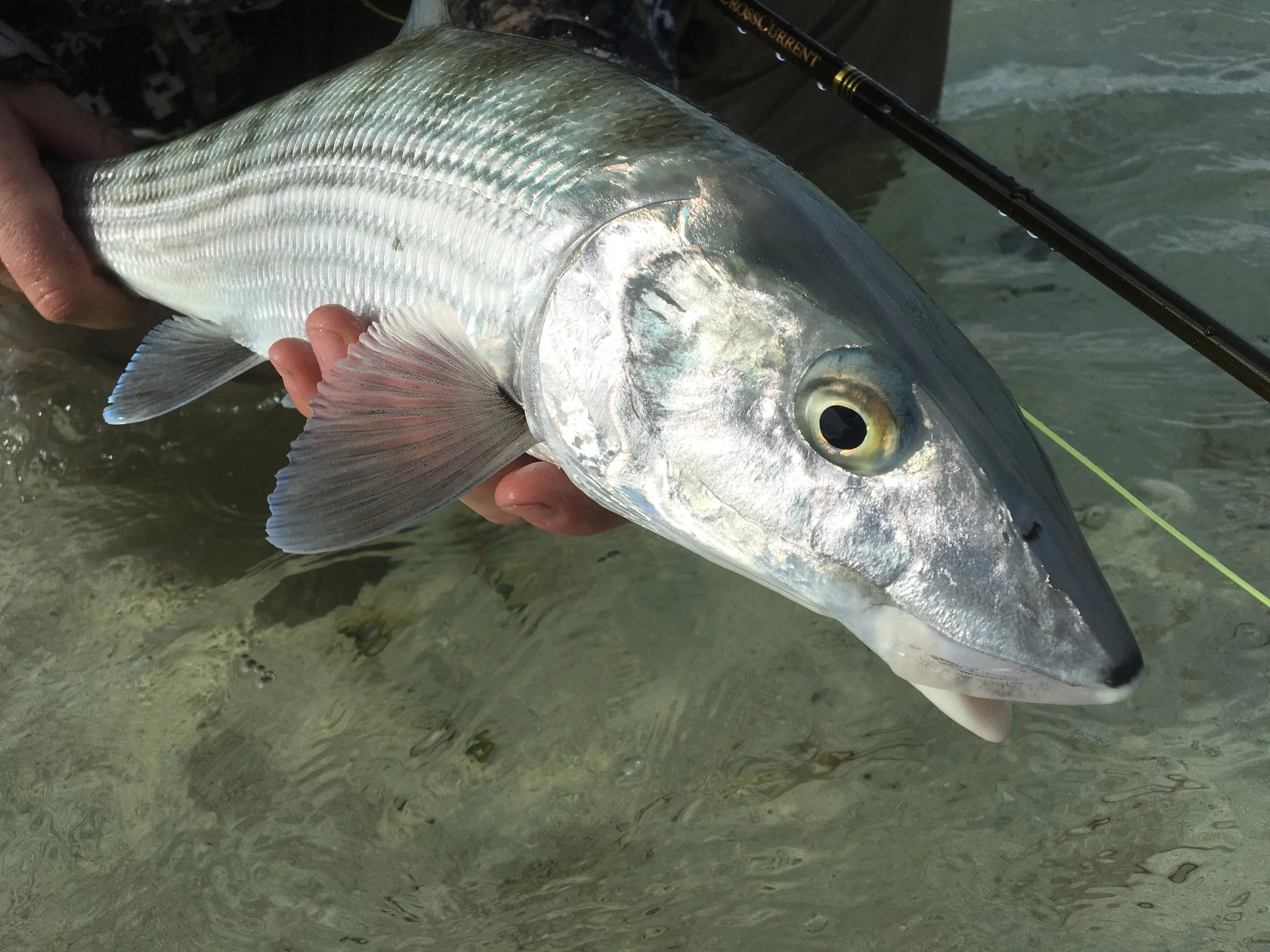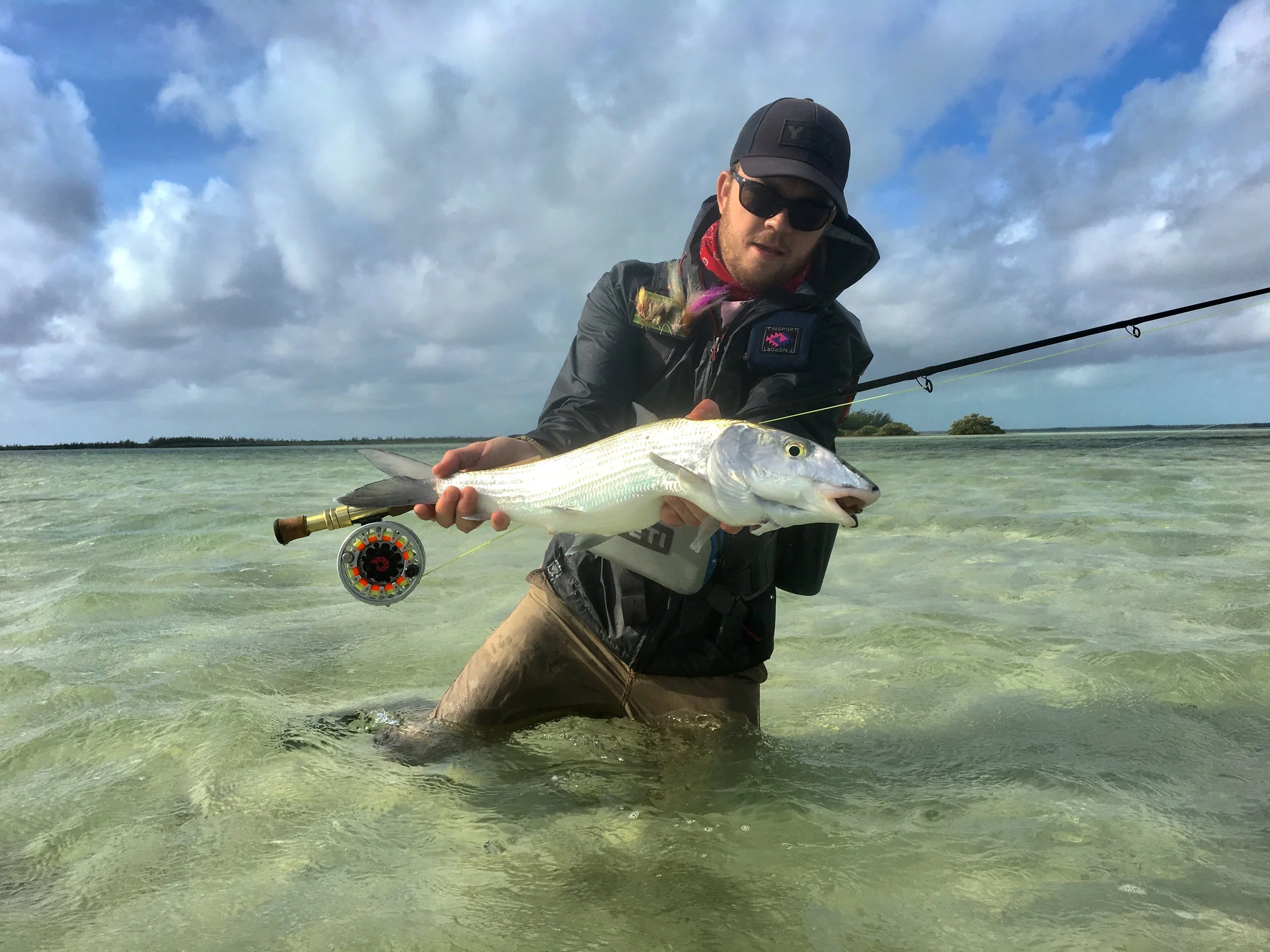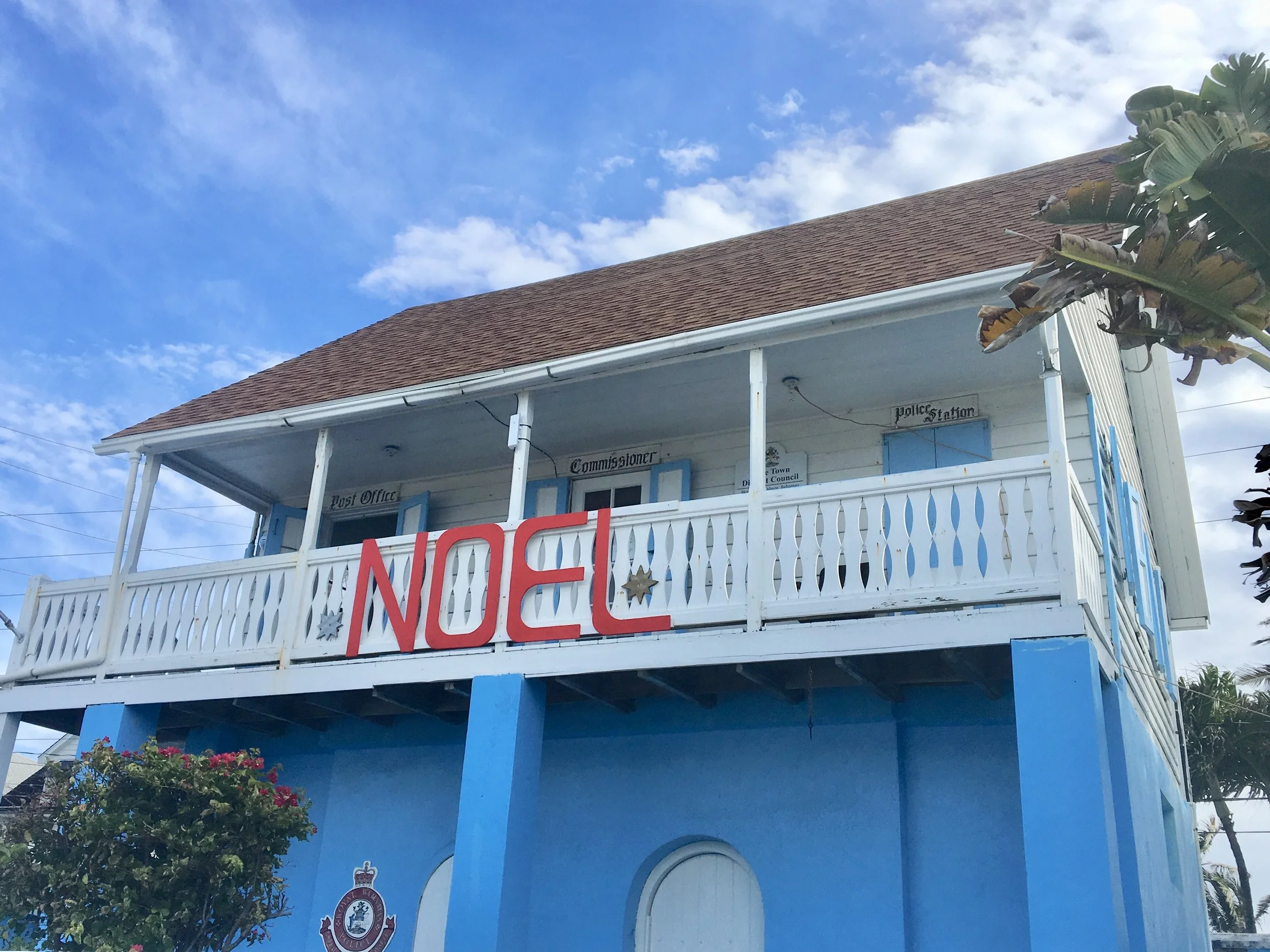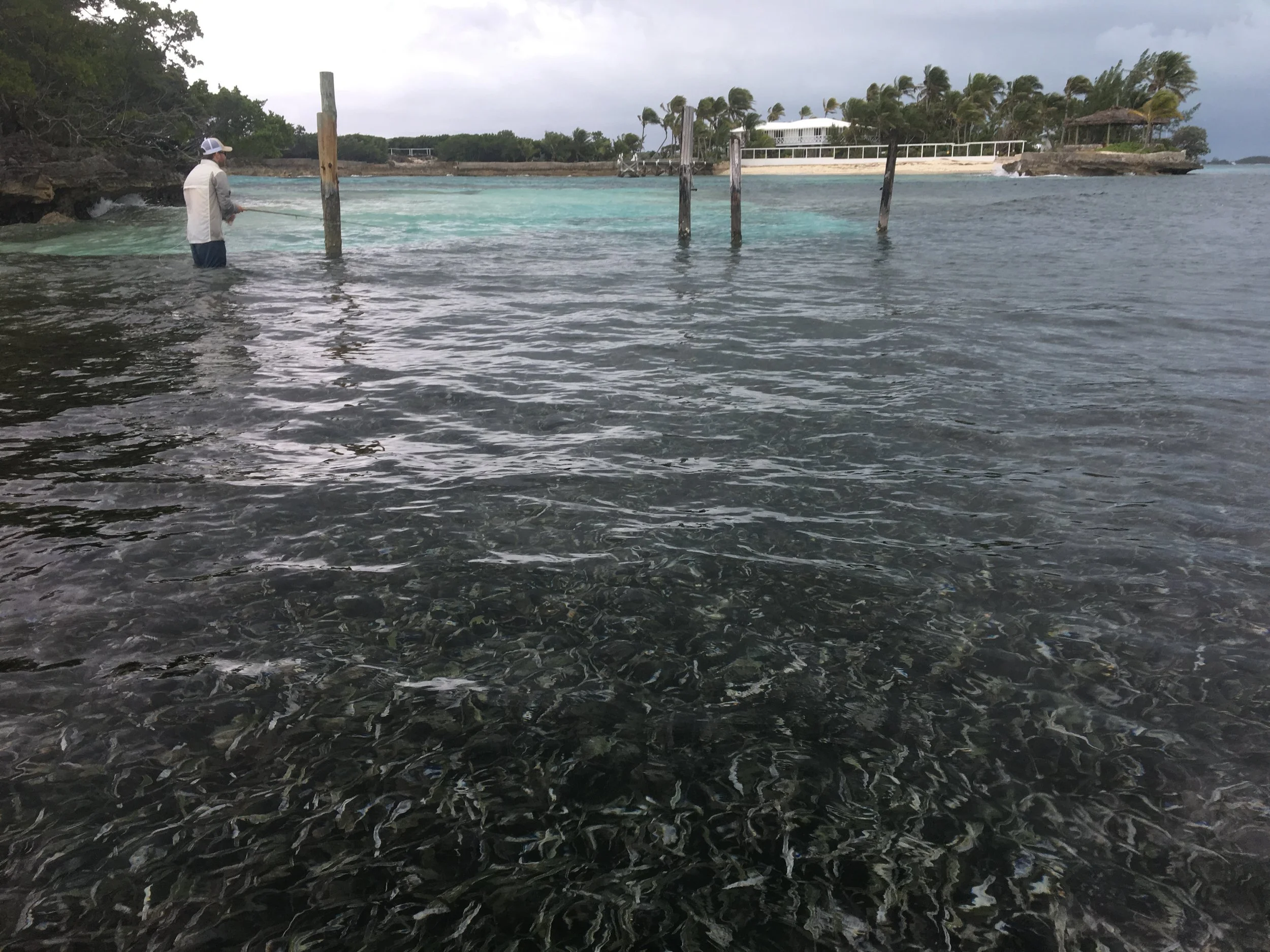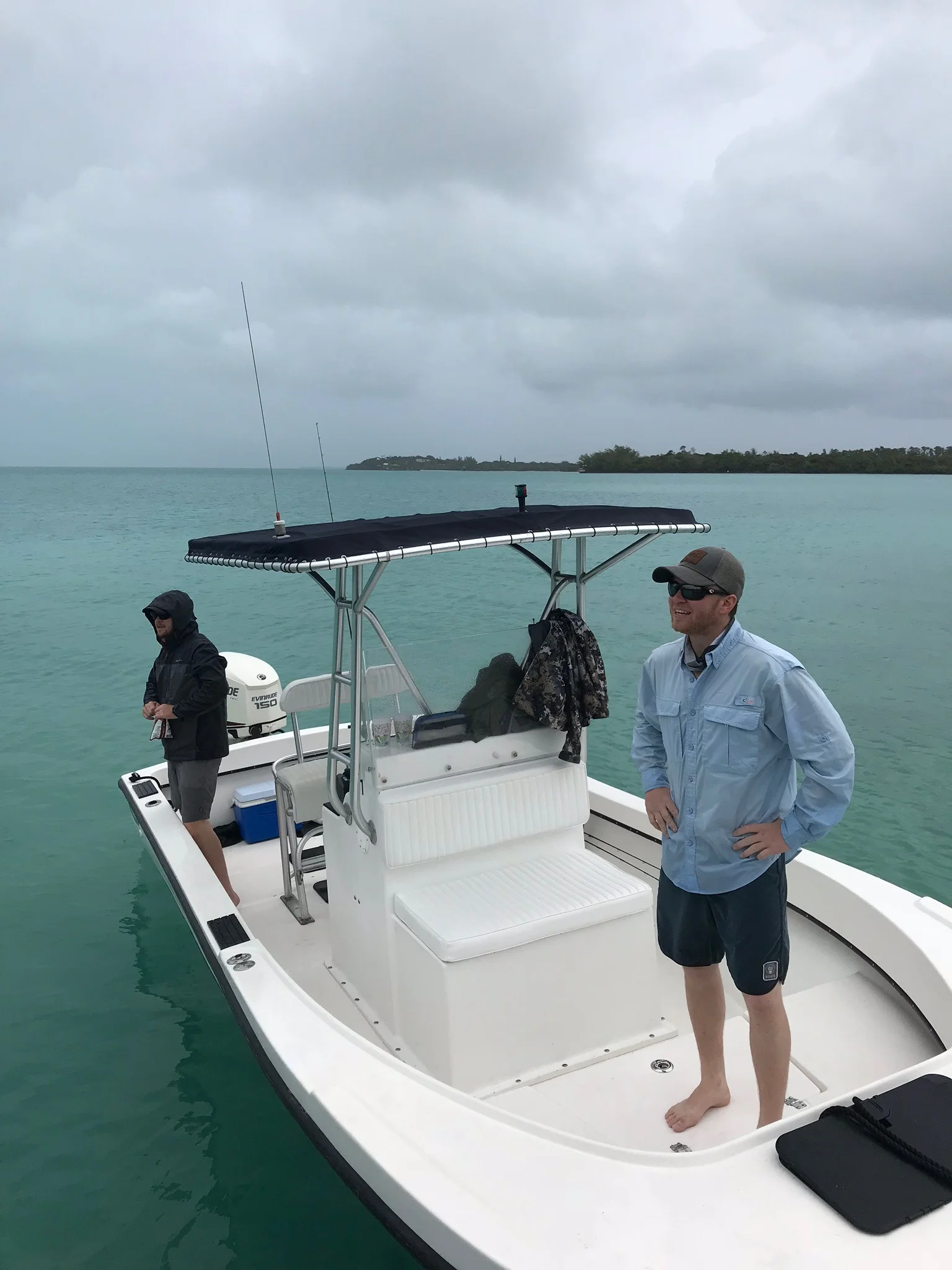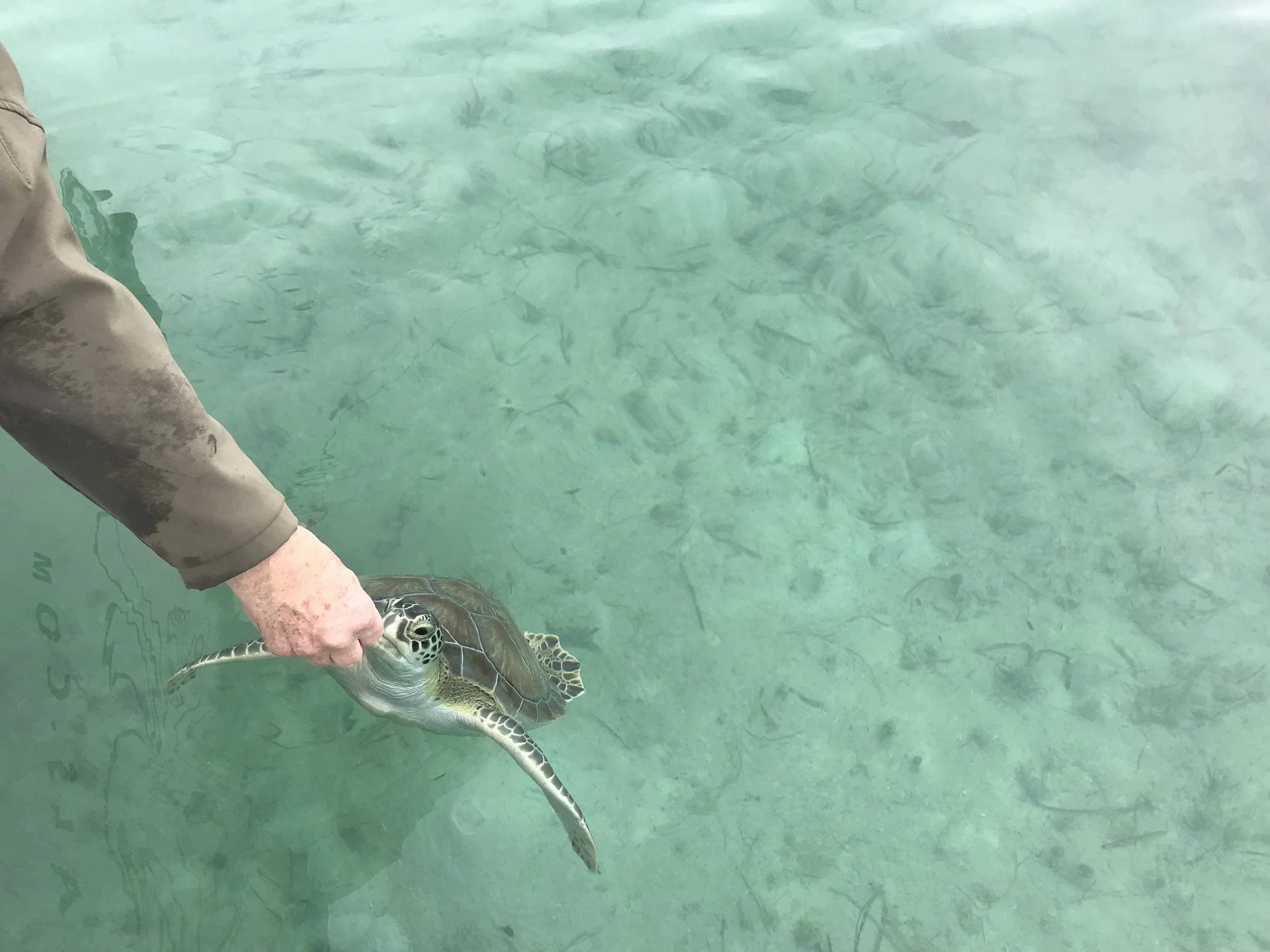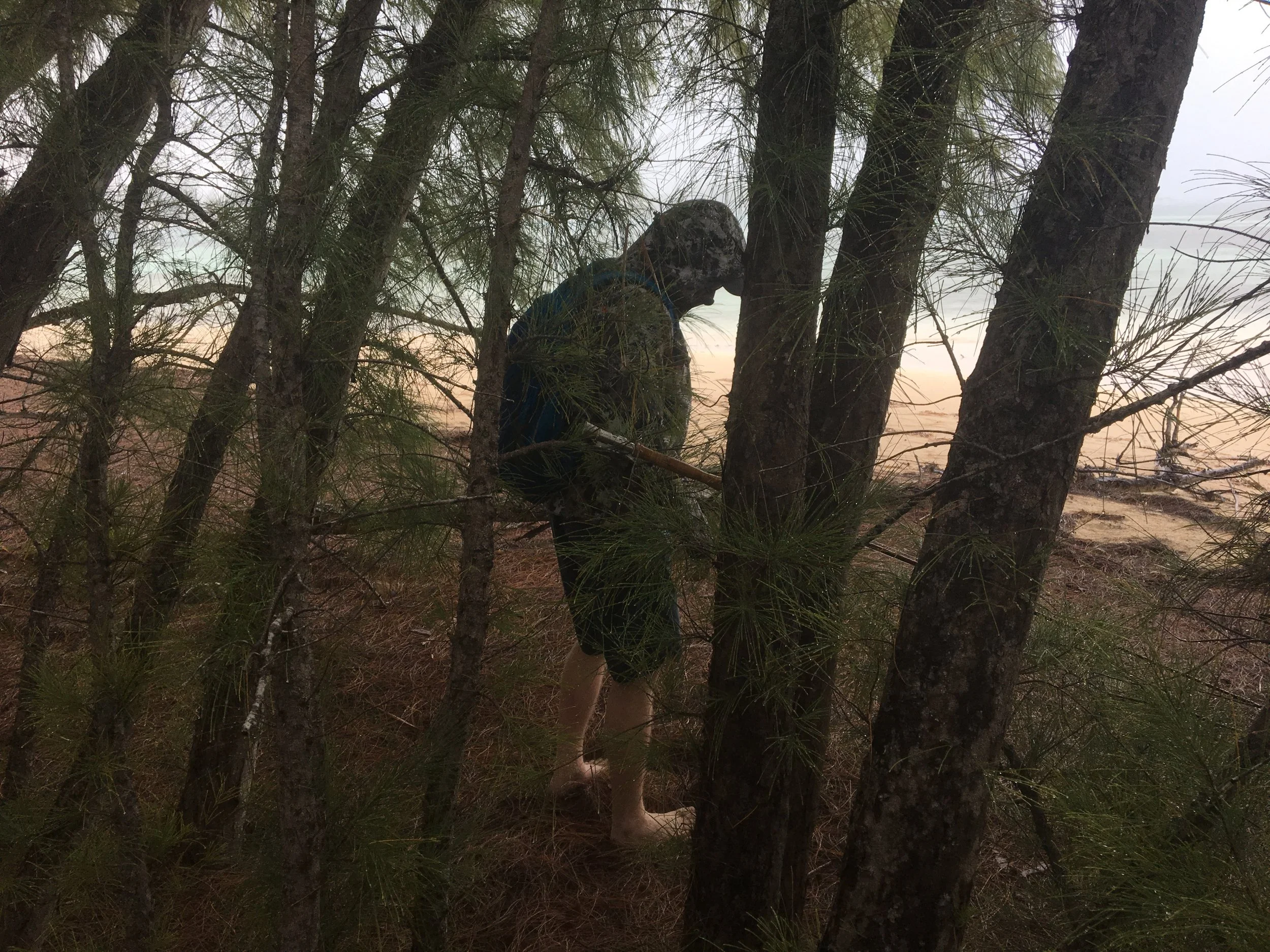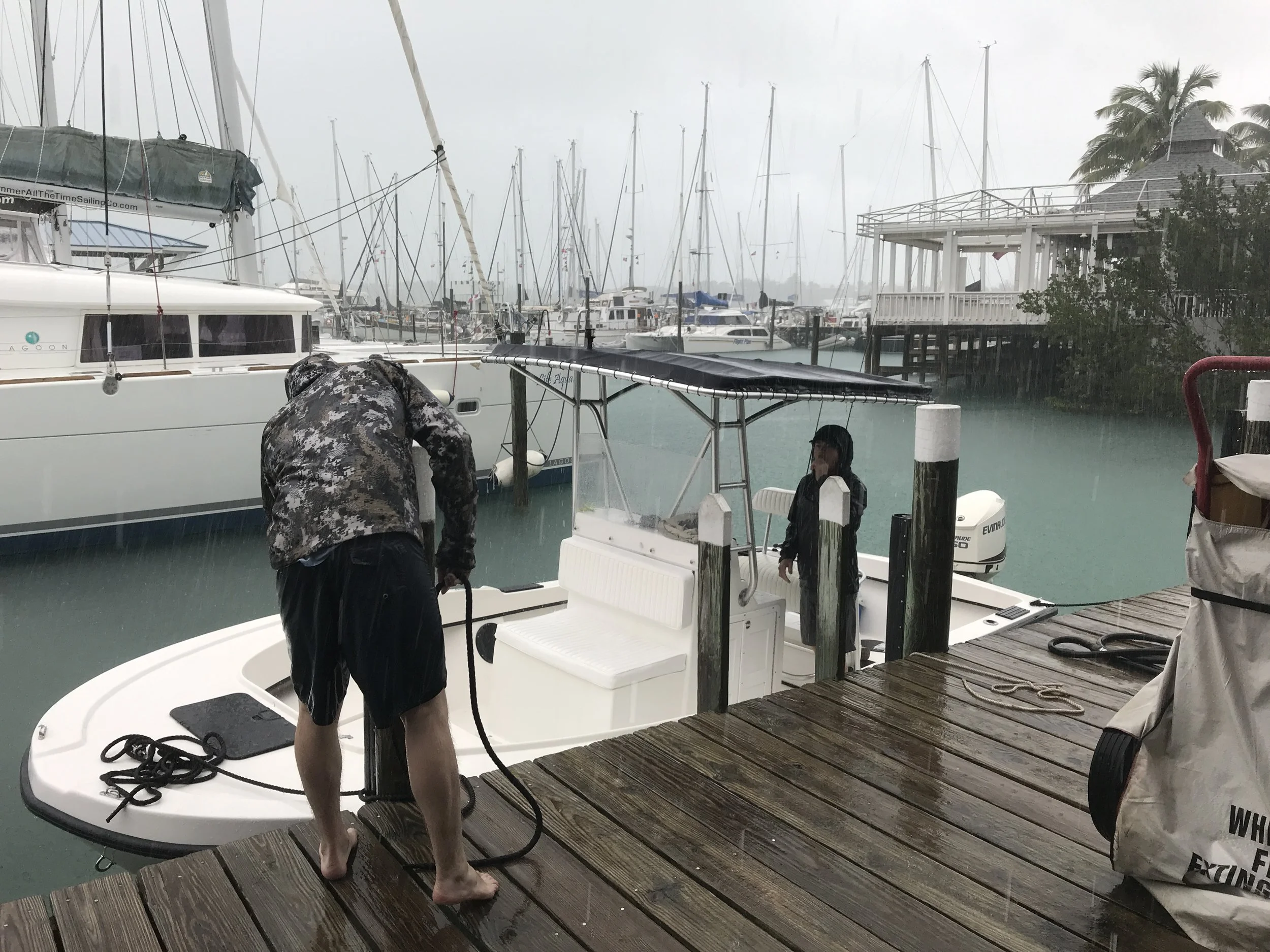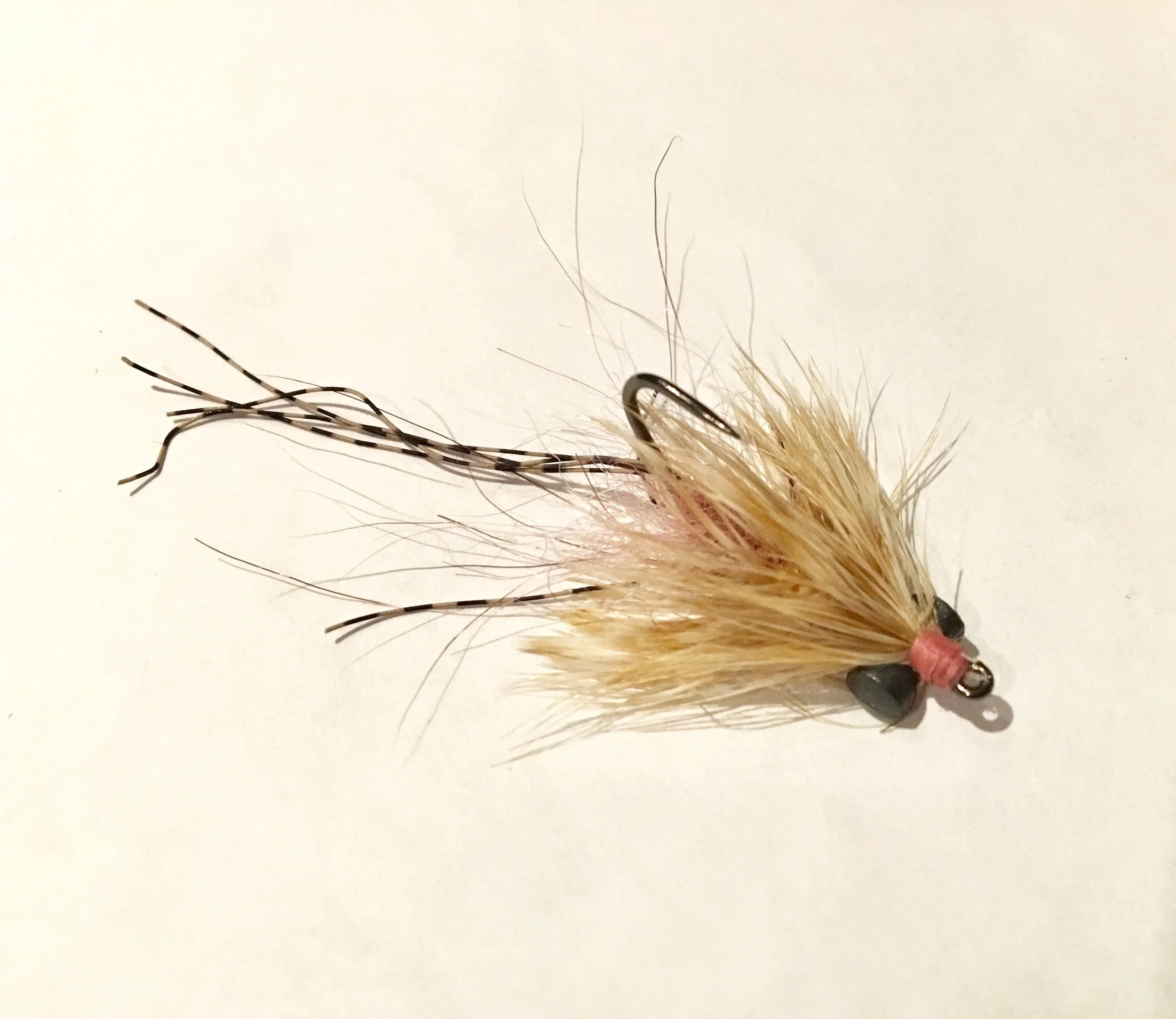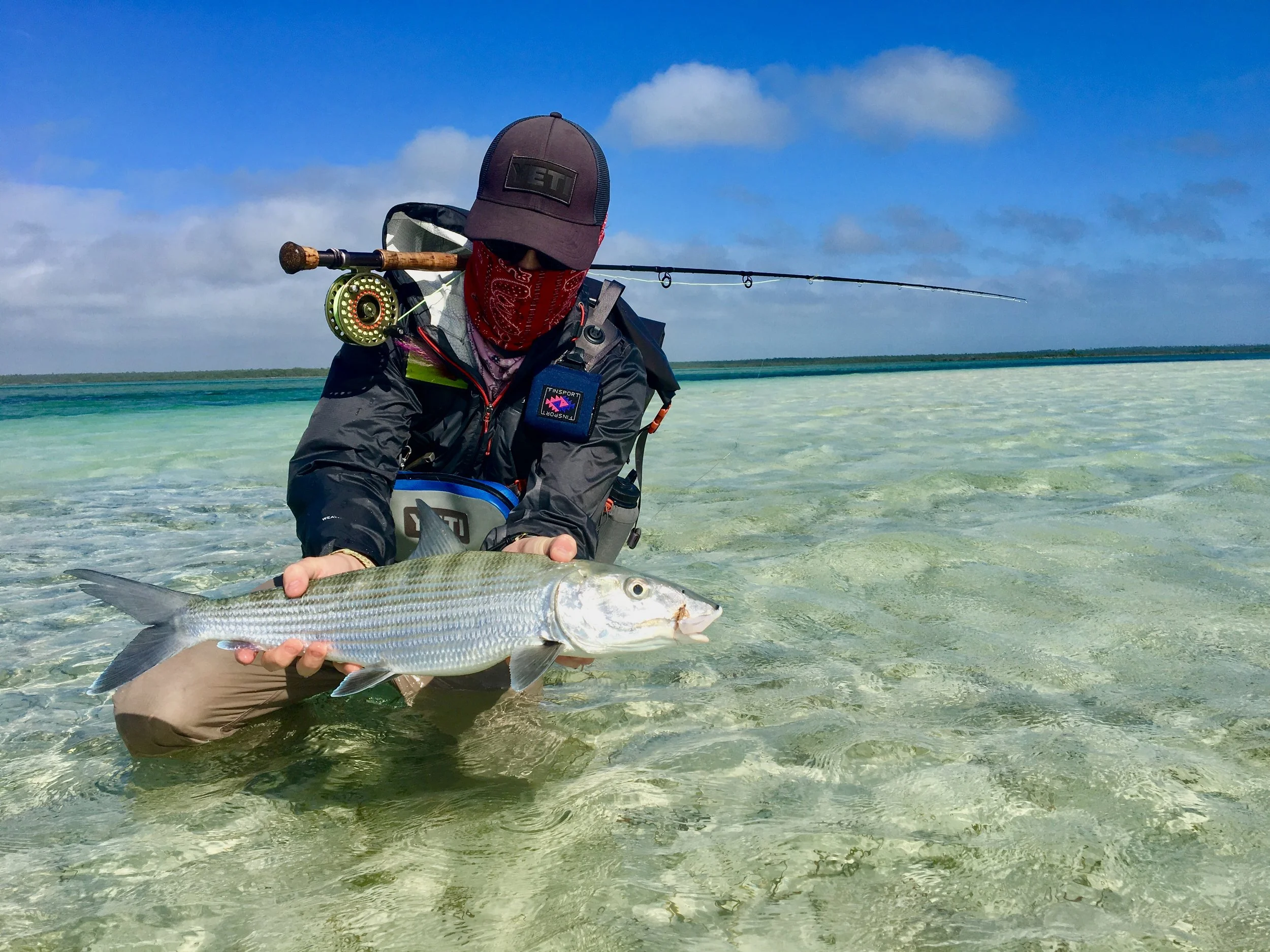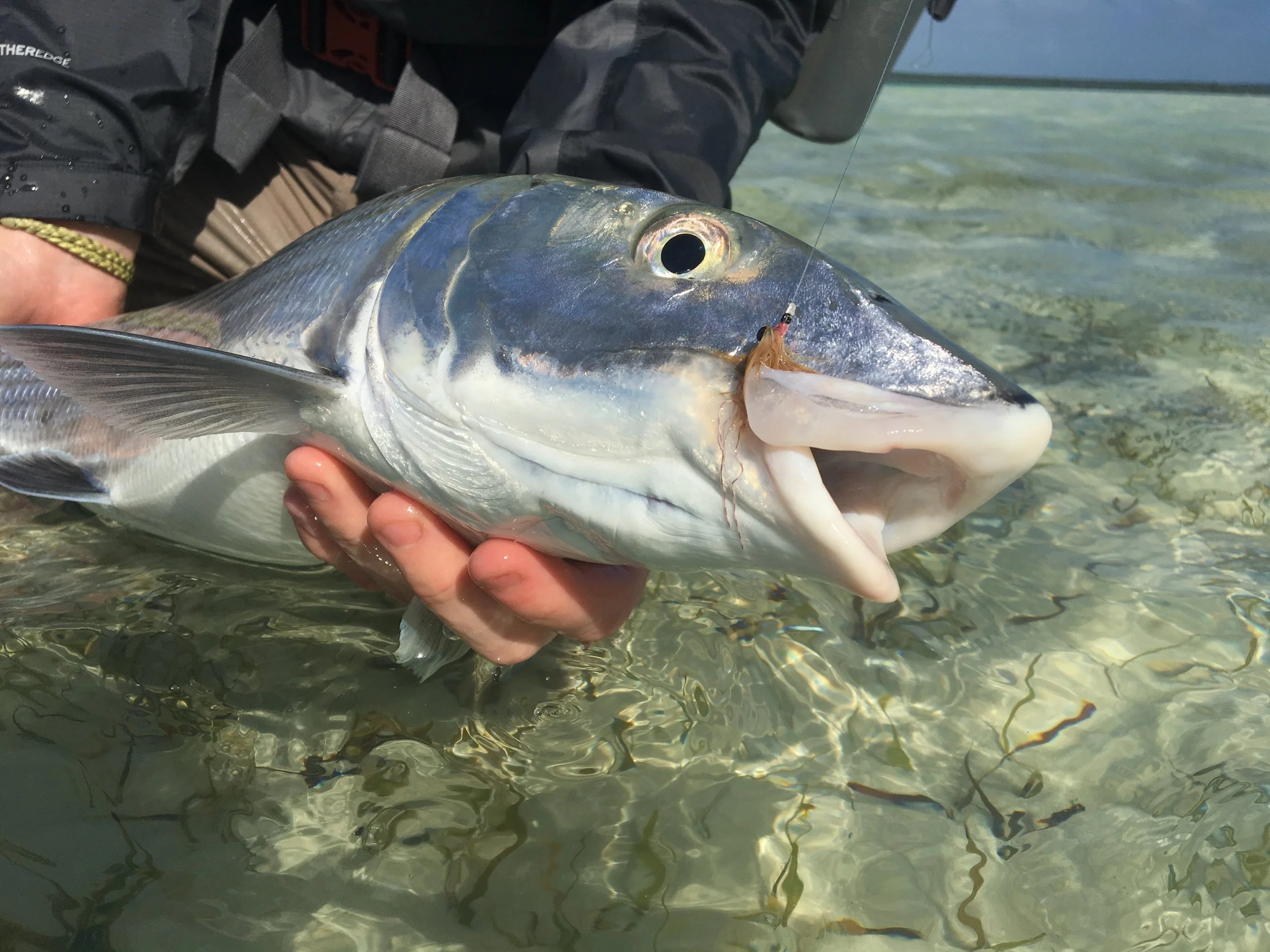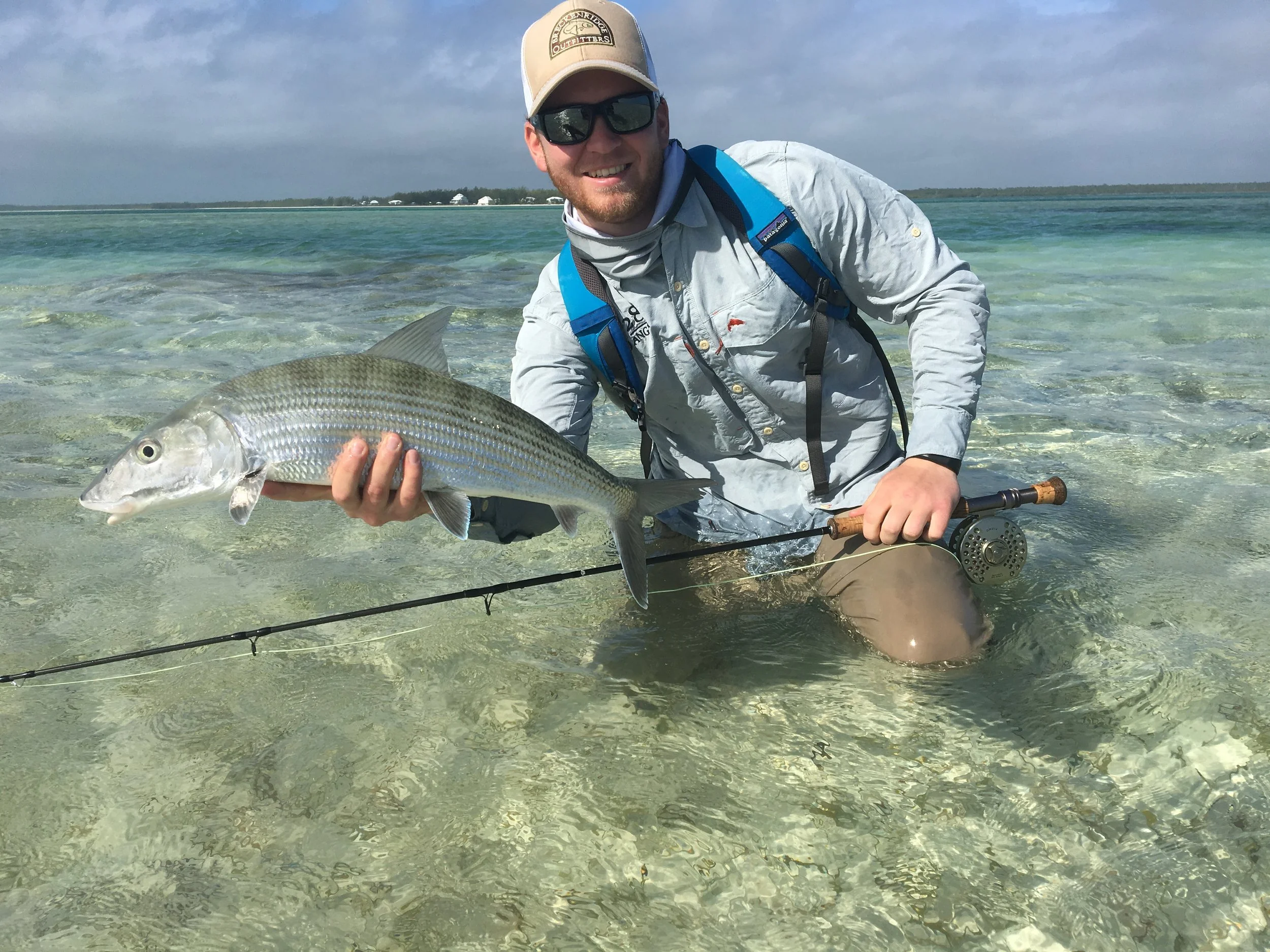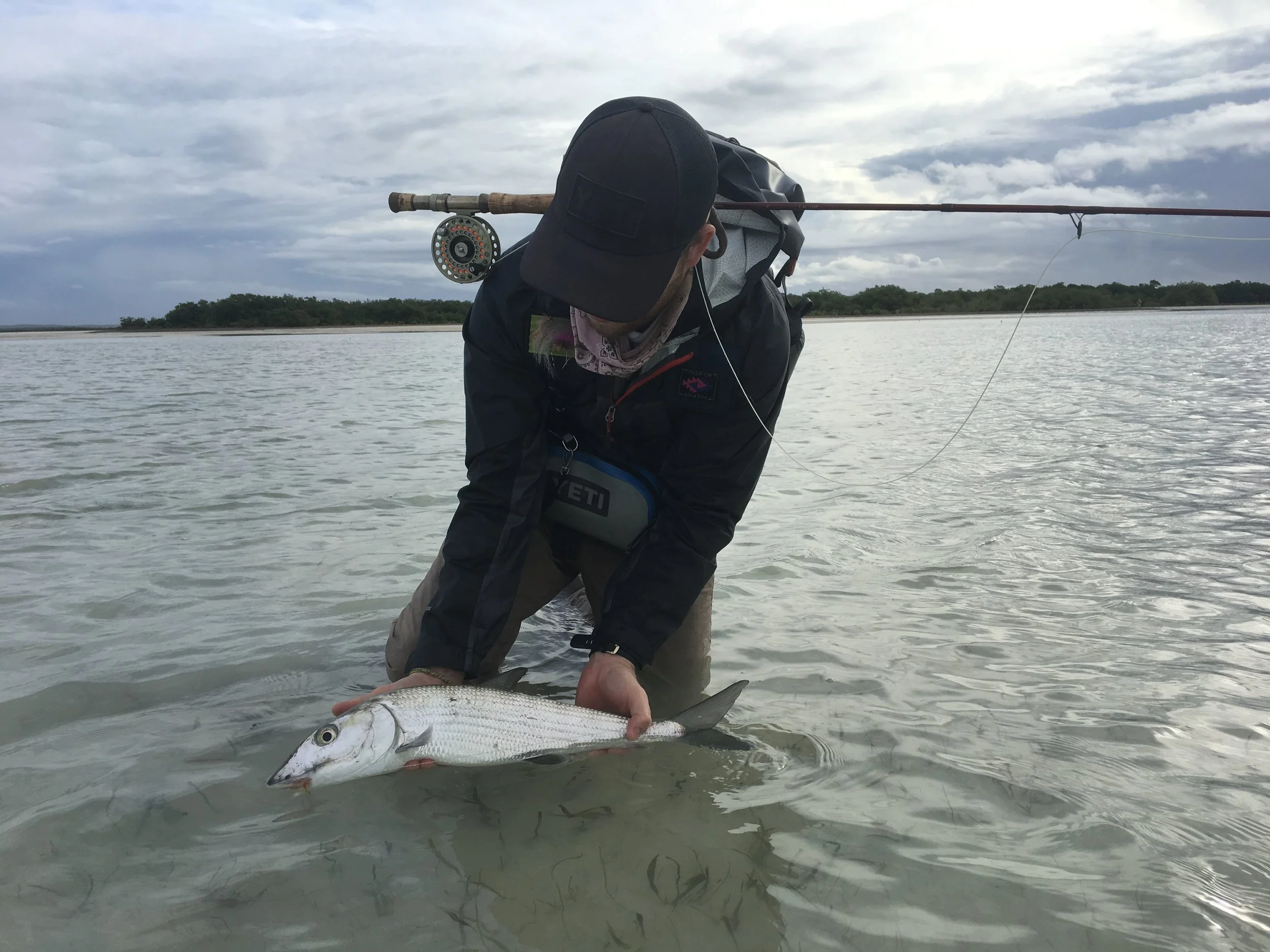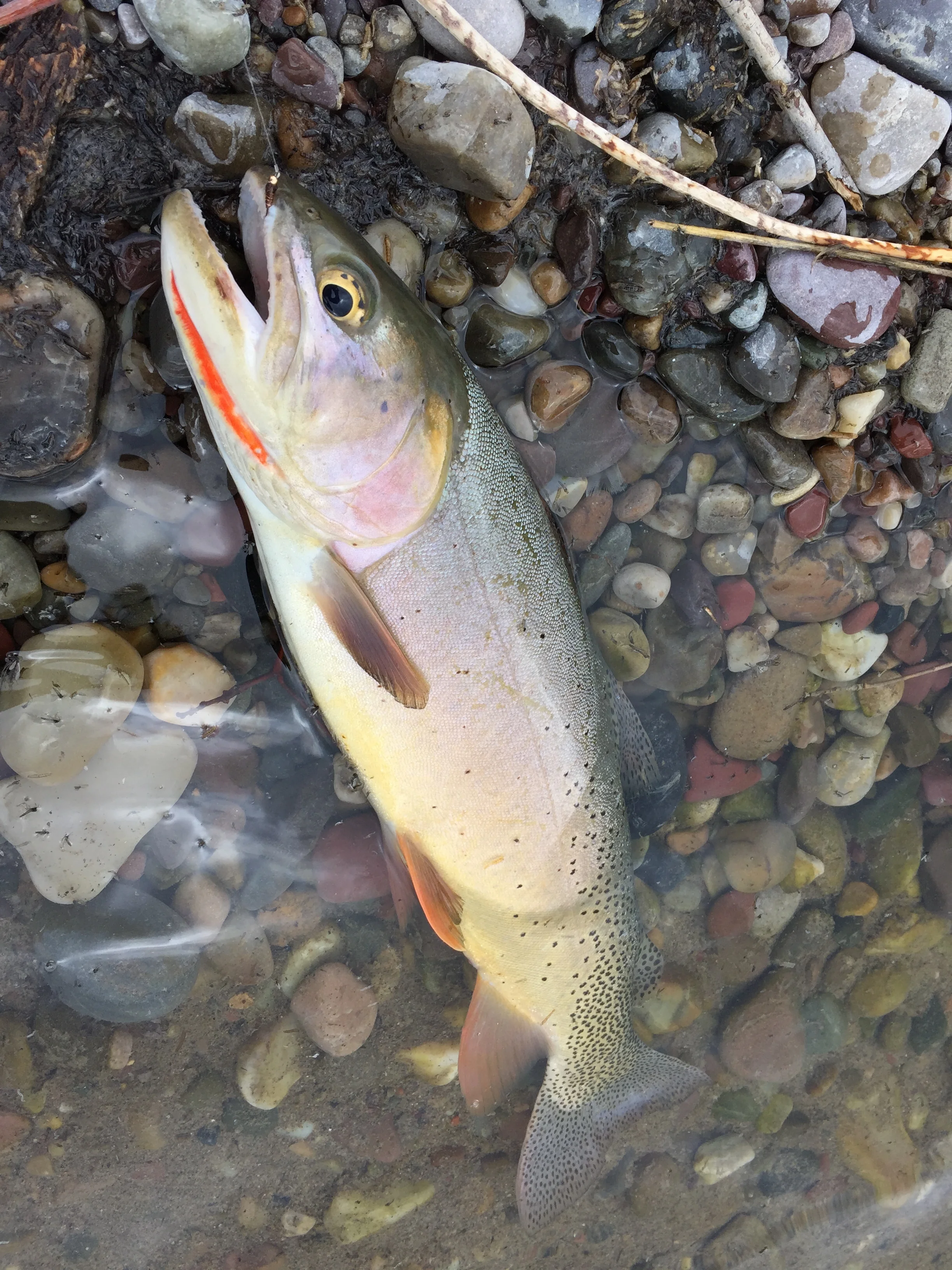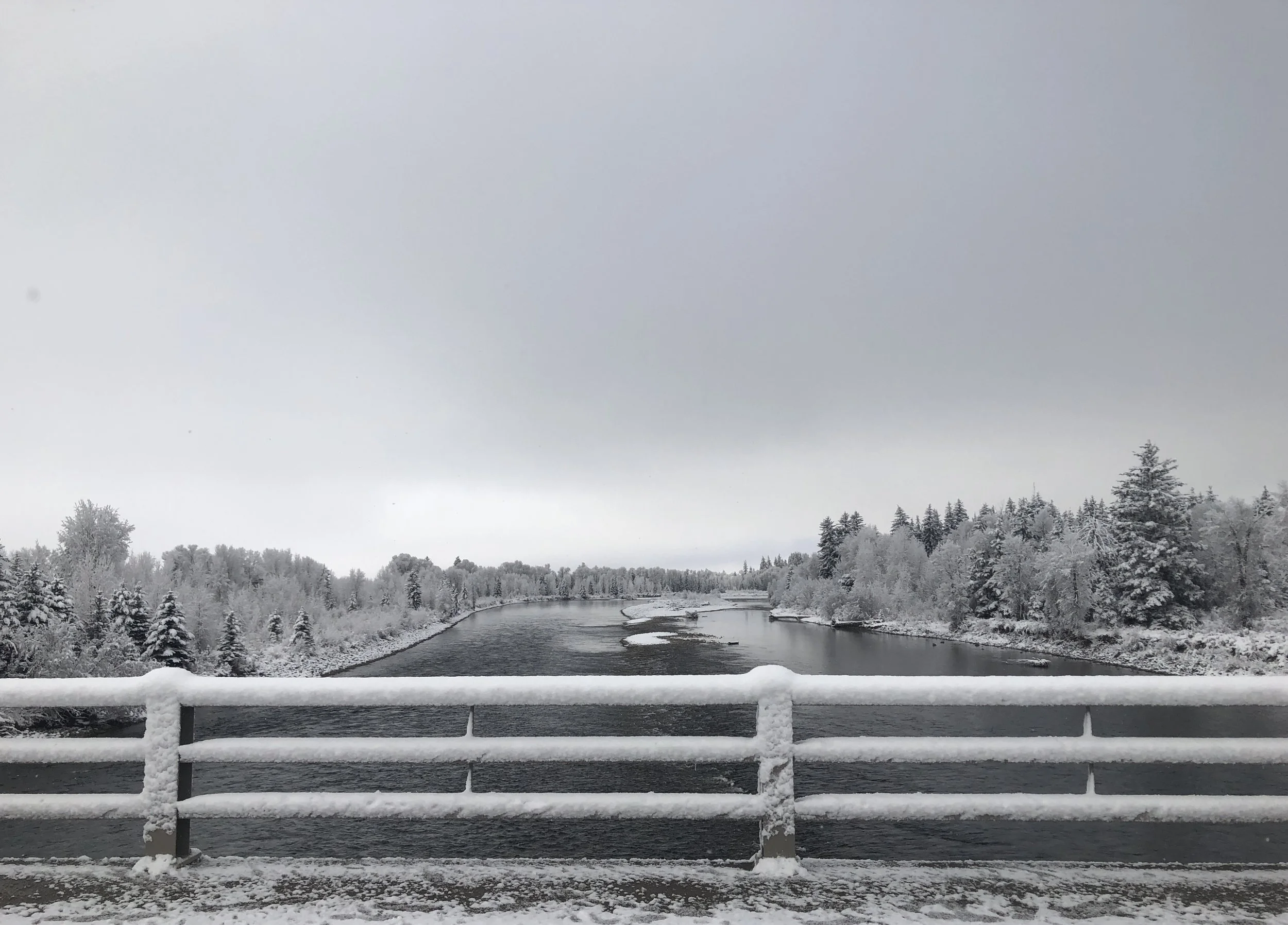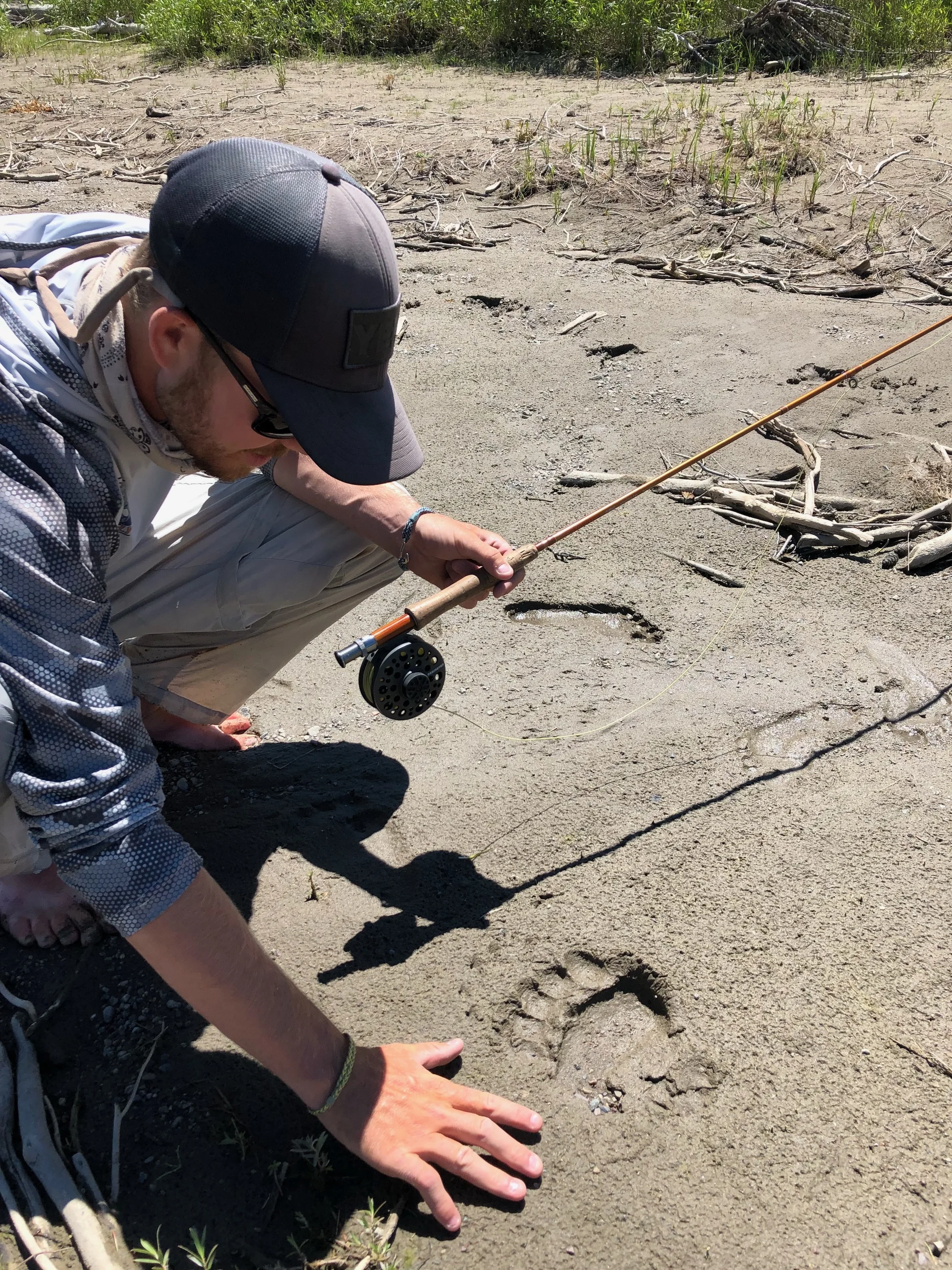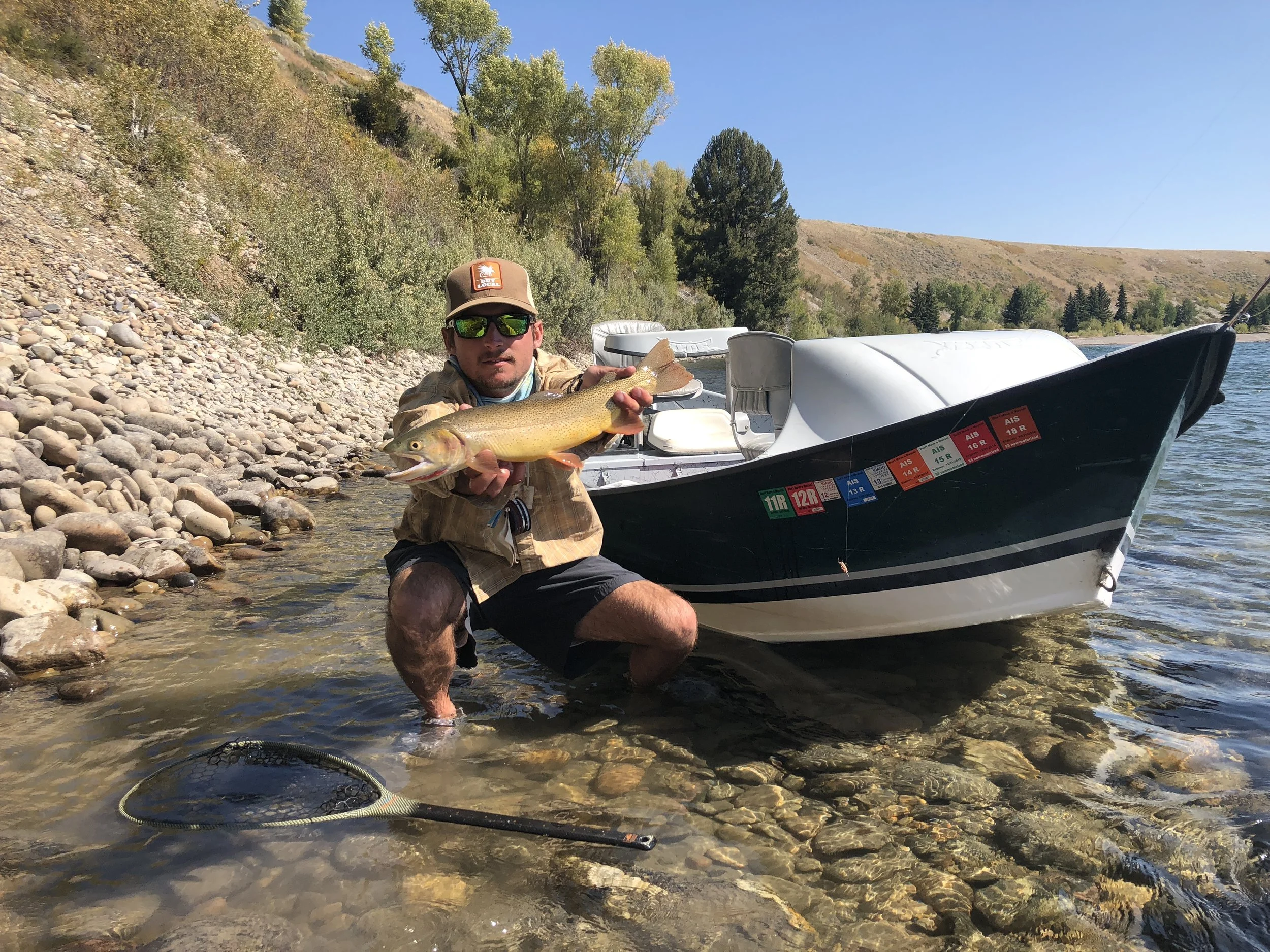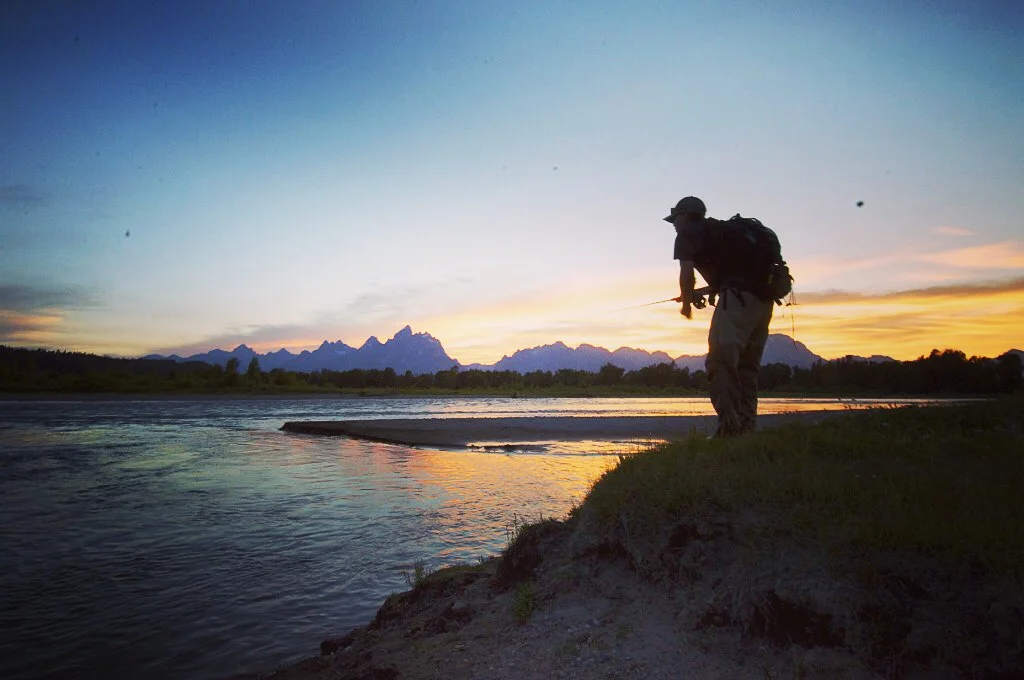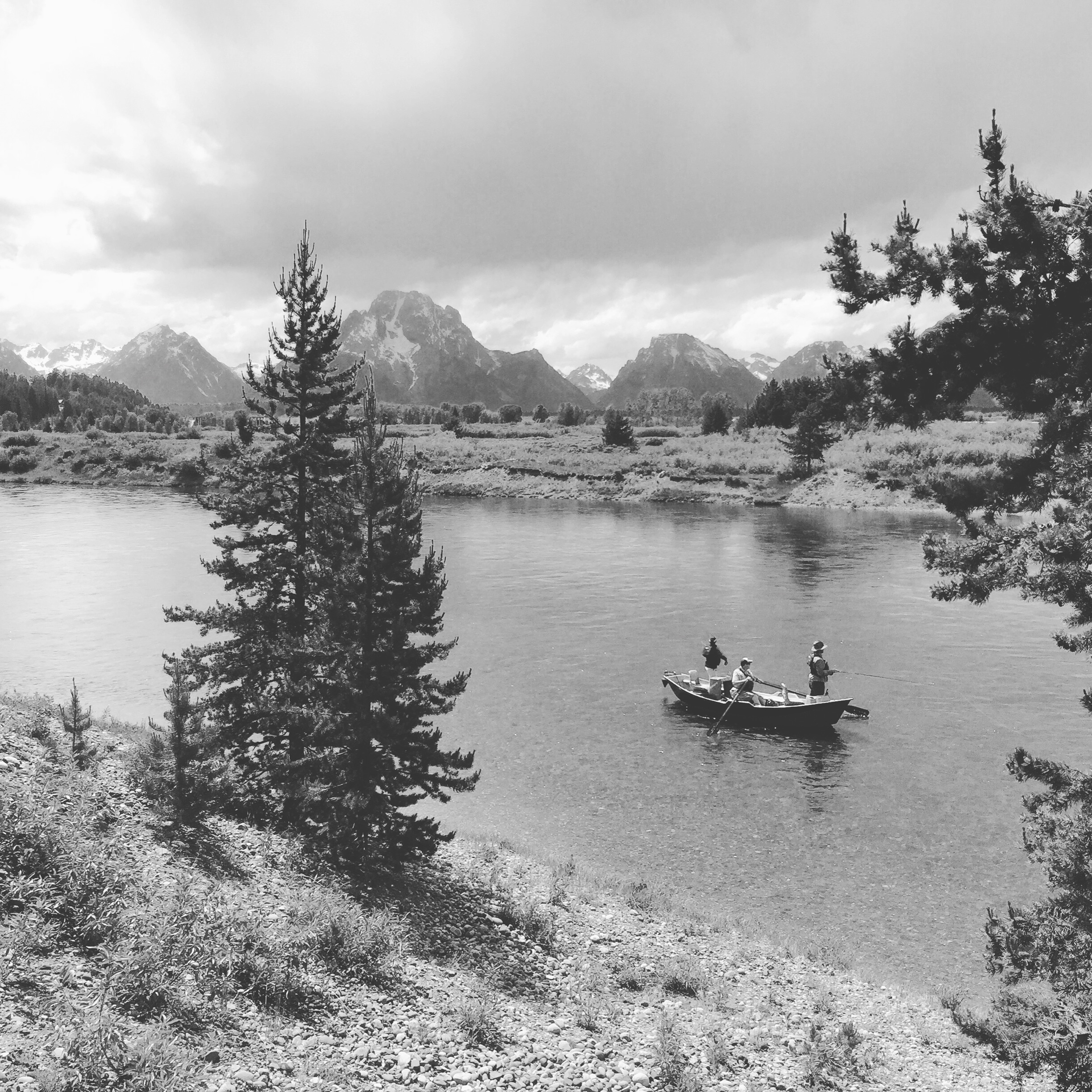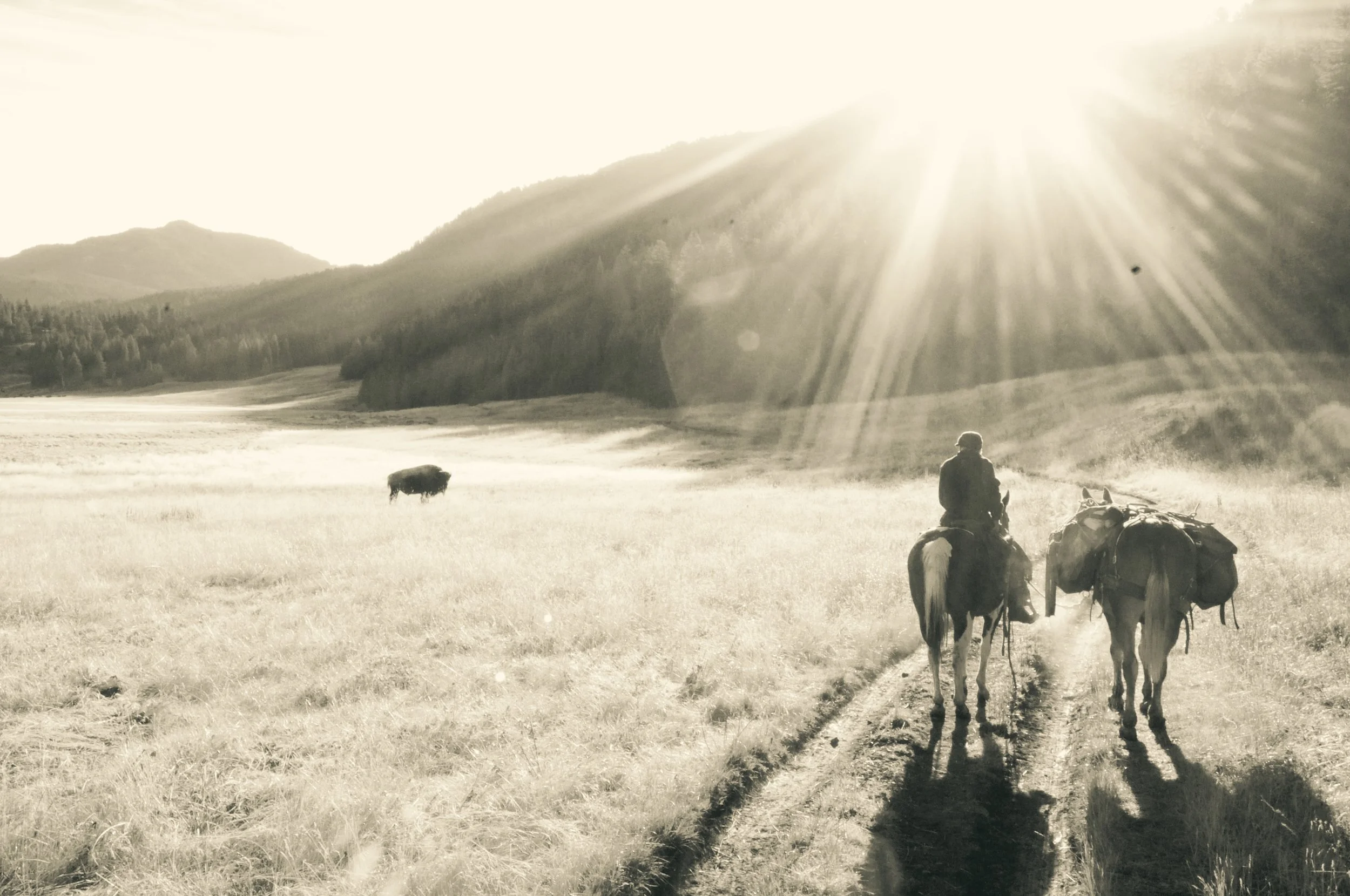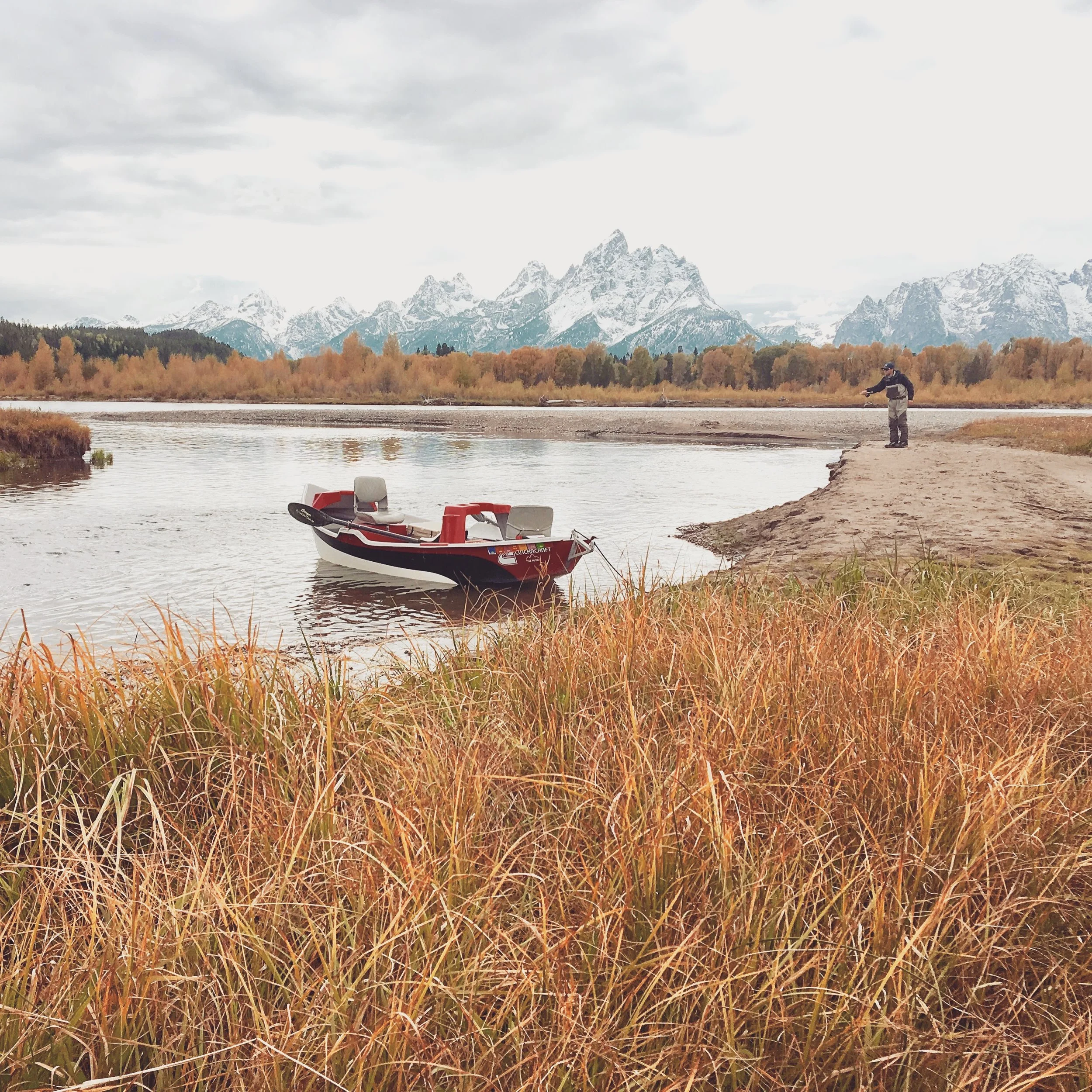Earlier this past fall the River Range Adventures team had the privilege of testing some newer lines from Cortland. The tippet material has quickly become our favorite for trout and saltwater applications. Here are some thoughts on the lines.
Big Fly 5 wt:
This line has become one of my favorite go-to winter lines for a variety of reasons. First and foremost, the aggressive taper helps to deliver a quick load to the rod without the need for much of a backcast. This is extremely important on a river where bank side obstructions and difficult wading persist year round.
During the colder months on the snake river, the flows have come down quite a bit, though still mostly too fast and deep to wade some of the best winter holding water. The trout take to the deepest and most consistent water they can find, often beneath large eroded banks, man-made dikes, and far into the slow sweeping center of long glide pools. The most productive way to get eats is by either slow swinging a large streamer or indicator nymphing with a brace of two or more large and heavy nymph patterns. Both methods place considerable weight at the end of an already outstretched leader. Without this super aggressive taper, the rigs fail to turn over properly and also are impossible to cast more then a short distance, even without much wind. Also consider that the Big Fly Line doesn’t just place a short oversized head near the front of the line, instead the taper from the head towards the line tip is abrupt, creating additional energy transfer between the line head and the leader. This is most important where a smooth energy transfer is not needed, but rather the straight power to hurl rubber legged, lead wrapped, nymphs two at a time. I have other more traditional indicator nymph lines that have more roll casting in mind with the taper, however some water types require such weight at the end of the leader that no matter how well the line is designed, a roll cast simply will not have the distance to get to certain pockets. This requires more of a casting taper, like that of modern streamer lines. The high floating tip helps the buoyancy of my indicators so I don’t need to go up a size and potentially spook fish within low water.
I wonder what the difference in the line performance would be if the rear level step would be altered towards more of a longer back taper. I only wonder because I tend to raise my elbow and use more arm when trying to open the loop in order to decrease the chances of my nymph rigs catching one another. This causes an additional false cast up over my head and I can feel a hitch in the energy transfer, which I wonder if an extended back taper might smoothen the transfer just enough the mitigate this.
Again this is not the intended application of the line, however I have enjoyed the ability to carry one line that can handle both large nymph rigs as well as punch water-pushing streamers through the air without over forcing the amount of line you carry on false casts.
Trout Boss:
I utilized the trout boss line for much of my September and October season on the Snake, throwing large foam dry flies from a drift boat. The line performed well within these parameters. I actually cut several feet from the tip section because the high winds often made casting difficult for my clients, and the nature of the large flies and prospecting method negated the need for the tip. If I was using the line purely for personal use, I don’t think I would’ve done this, as I can see the versatility offered by this line.
If I could customize a line for the Snake fishery, I would probably use this exact line with an altered tip, body, and front taper. A slightly longer front taper would give just a bit more control in placing foam hoppers near the bank. Often the difference between someone catching fish and someone catching BIG fish on the Snake is the ability to target within parameters of inches and not feet. I’d cut the level tip back a few feet, take 5 feet off the body, and extend both the front and rear tapers with the resulting line. The lack of a tip might sacrifice a subtle landing of the fly, however this matters little, and while having increased control through the extension of the tapers, and a more compact head to help cut wind, the line would excel at accuracy with foam flies in the wind on a fast moving large western freestone river.
I was most impressed by the lines coating that seemed to last longer than most of my other lines. Under a Wyoming summer sun, most lines begin cracking after a month or two of everyday use. The lines I’ve had from Rio seemed to be the first to crack while my SA sharkwave lines do a little better for obvious textured reasons. The trout boss line is still going strong after two months of use without a single crack, which is impressive considering the line doesn’t sacrifice a smooth and quiet nature.
The trout boss also floats incredibly well, even when uncleaned for weeks at a time. I’m very excited to test this line next season for the entirety of the summer.
Ultra Light:
Flat Creek in Jackson Hole, WY might be one of the most technical Spring Creek fisheries that I’ve ever experienced. Often the trout can feel your coming vibrations from beneath the cutbacks, even as you slowly tip-toe into position. I’ve fished the stream for years now, often using a Winston Air 4 weight and a matching Orvis Superfine line. The reason I’ve used a 4 weight is because the superfine line in a 5 weight doesn’t have the right front taper or diameter. Even well placed loops and proper mechanics can have vibrations across the water surface. The same line in a 4 weight is certainly easier when making delicate presentations on calm days, however the lack of grain weight makes it challenging on the usual windy days that rip across the open meadow. Any lighter of a line requires a rod less stout and with deep undercuts and disproportionately large trout, I’ve lost big fish as they bent 3 weights over to the cork. This has been the challenge, finding a line that pairs with a 4 or 5 weight rod, but casts delicate presentations on pair with much lighter and thinner diameter lines.
The Ultralight Iine seems to do just that. I’ve used the 5 weight and found that the front taper is almost twice as long as my previous choices and the diameter even much thinner. I can get away with using a stiffer rod to fight fish and punch loops through the heavy wind but still rely on the thin tip and long front taper to transfer this energy smoothly into a very subtle presentation.
What I like most about the line is that the front section actually seems to sink into the surface film a bit, which I’ve noticed, along with the choice colors, seems to spook fewer trout. I’m not sure if its some kind of surface light refraction opposed to cast shadows from those lines that ride high, but the line definitely seems to skirt over the heads of feeding fish without putting them down. I think the ultralight tip diameter probably plays more of a role in this than I’m giving it credit.
I’ve also noticed that the diameter of the tip seems to act almost like an extension of the leader. The significance of this is that when fishing to spooky trout, sometimes within gusts of wind, I can get away with short leaders that turn over, while starting my butt sections with thinner diameters than I typically would. This increases the delicacy of presentations while still maintaining enough of a quick taper down to light tippets that can turn over properly.
#RiverRangeAdventures
#wherethewildstillholdsdominion


